Sercomm TV00 Wireless Printer Server User Manual
Sercomm Corporation Wireless Printer Server
Sercomm >
Users Manual
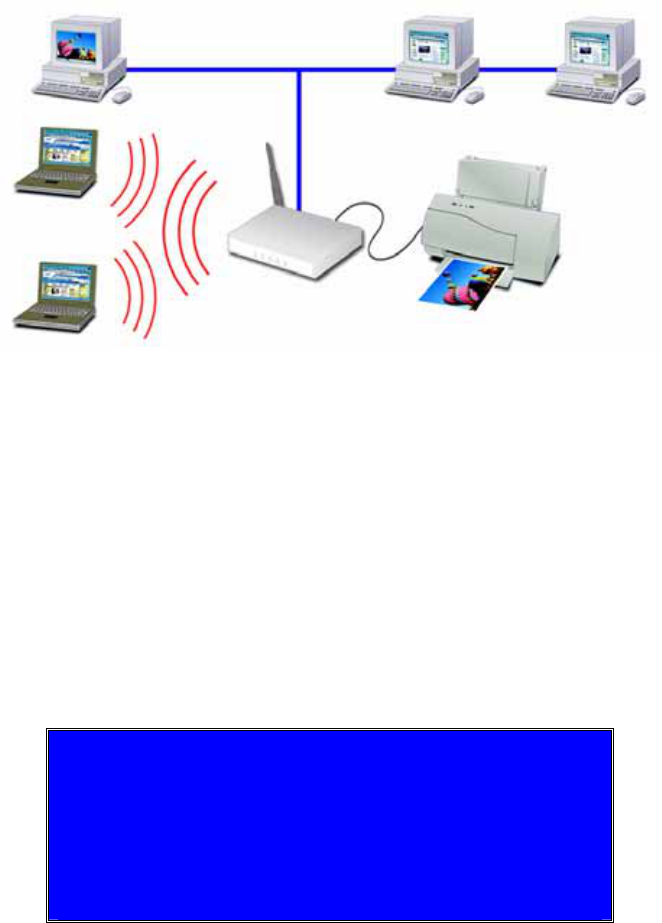
8
80
02
2.
.1
11
1g
g
W
Wi
ir
re
el
le
es
ss
s
P
Pr
ri
in
nt
t
S
Se
er
rv
ve
er
r
U
Us
se
er
r
G
Gu
ui
id
de
e
Copyright ©2004. ALL RIGHTS RESERVED
Document Version: 1.2
P/N: 9560NT0001
All trademark and trade names are the properties of their
respective owners.

Page i
Table of Contents
Chapter 1 Introduction 1
Features......................................................................................................................... 1
Safety Instructions ........................................................................................................ 2
Package Contents.......................................................................................................... 3
Physical Details ............................................................................................................ 3
LED Indicators ............................................................................................................. 4
Diagnostic Push Button ................................................................................................ 5
Chapter 2 LAN Installation 6
Procedure...................................................................................................................... 6
Chapter 3 Wireless Print Server Configuration 7
Overview ...................................................................................................................... 7
Using the Windows Wizard.......................................................................................... 7
Chapter 4 Client PC Configuration 10
Overview .................................................................................................................... 10
Windows Peer-to-peer Printing .................................................................................. 12
Windows SMB Printing.............................................................................................. 19
Windows with Server-based Print Queues ................................................................. 20
Macintosh (AppleTalk)............................................................................................... 21
Macintosh OS X ......................................................................................................... 22
Chapter 5 BiAdmin Management Utility 23
Requirements.............................................................................................................. 23
Installation .................................................................................................................. 23
Operation .................................................................................................................... 23
Chapter 6 Web-Based Management 38
Overview .................................................................................................................... 38
Preparation.................................................................................................................. 38
Connecting to the 802.11g Wireless Print Server....................................................... 39
Configuration Screens ................................................................................................ 39
Chapter 7 Special Features 46
Overview .................................................................................................................... 46
Internet Printing Protocol (IPP) .................................................................................. 46
Internet Mail Printing ................................................................................................. 51
Printing through the Internet....................................................................................... 55
Page ii
Chapter 8 Troubleshooting 56
Overview .................................................................................................................... 56
Hardware & Connection Problems............................................................................. 56
AppleTalk (Macintosh)............................................................................................... 57
Windows Printing Problems ....................................................................................... 59
Unix Troubleshooting................................................................................................. 64
Appendix A Specifications 65
General Specifications................................................................................................ 65
Protocol Support......................................................................................................... 65
Feature Support........................................................................................................... 65
Regulatory Approvals................................................................................................. 66
Appendix B Windows Server Configuration 68
Windows NT4.0 Server .............................................................................................. 68
Windows 2000/2003 Server ....................................................................................... 69
Appendix C Unix Systems 70
Overview .................................................................................................................... 70
802.11g Wireless Print Server IP Address Configuration .......................................... 70
Other 802.11g Wireless Print Server Configuration................................................... 70
LPD Configuration ..................................................................................................... 71
Appendix D NetWare 76
Overview .................................................................................................................... 76
Creating an NDPS Manager Object............................................................................ 76
Creating an NDPS Printer Agent................................................................................ 77

Page 1
Chapter 1
Introduction
This chapter provides an overview of your 802.11g Wireless Print Server's features.
Features
Congratulations on the purchase of your new 802.11g Wireless Print Server. Your 802.11g
Wireless Print Server was designed to provide a simple and efficient network printing solution.
It is packed with features, including:
¾ Wireless LAN Support. Wireless stations supporting the IEEE 802.11b or IEEE
802.11g standard can interoperate with the 802.11g Wireless Print Server. Both LAN and
WLAN users can print to the attached printer or printers.
¾ Versatility. The 802.11g Wireless Print Server supports up to four protocols: TCP/IP,
SMB (Service Message Block), AppleTalk (EtherTalk), and NetBEUI. It features an
Ethernet interface port and operating system support includes Unix, NetWare (NDPS LPR
printing), and Microsoft Windows.
¾ Easy Installation. The 802.11g Wireless Print Server makes adding printers or plotters
to your network simple.
¾ Easy Setup. A number of utility programs are supplied to simplify setup. For Windows
95/98/Me/NT/2000/XP users, the BiAdmin program makes it easy to configure the
802.11g Wireless Print Server for a variety of network and server configurations.
¾ Web-based Interface. The Web-based interface provides an easy method of
configuration in TCP/IP networks, regardless of your client platform.
¾ Compact Size. This allows the 802.11g Wireless Print Server to be used even where
space is limited.
¾ Remote Management Tools. A variety of software tools are provided. In most
environments, both the 802.11g Wireless Print Server and attached bi-directional printers
can be configured remotely.
¾ Internet Printing Protocol (IPP) Support. The 802.11g Wireless Print Server can act
as an IPP (Internet Printing Protocol) Server, allowing clients, suppliers, colleagues and
others to print to your printer from anywhere on the Internet. Windows IPP Client software
is also supplied.
1

Page 2
Safety Instructions
For your own safety, and to protect your 802.11g Wireless Print Server, please observe the
following safety advice.
1. Unplug this device from its power source before cleaning. Use only a slightly dampened
cloth for cleaning. Do not use liquid or aerosol cleaners.
2. Avoid using this product near water. Exposure to water poses an electric-shock hazard.
3. Do not place the 802.11g Wireless Print Server on an unstable surface. The device may
fall causing serious damage to the device.
4. This device should only be used with the power supply type specified on the marking label.
If you are not sure of type of your local power supply, consult your dealer or the local
power company.
5. Do not pinch, crimp or otherwise damage the power cord. If exposed to foot traffic,
ensures that the cable is properly shielded and does not pose a tripping hazard.
6. If using an extension cord, makes sure the total ampere rating of the products using the
cord does not exceed the extension cord's ampere rating.
7. Do not attempt to service this device, as opening or removing casing may expose you to
dangerous voltage points or other risks. Refer all servicing to qualified service personnel.
8. The 802.11g Wireless Print Server should be serviced by qualified service personnel under
the following conditions:
• The power cord is damaged or frayed.
• Liquid has been spilled onto the product.
• The product has been exposed to rain or water.
• The product does not operate normally in accordance with the operating instructions.
• The device has been dropped or the casing has been damaged.
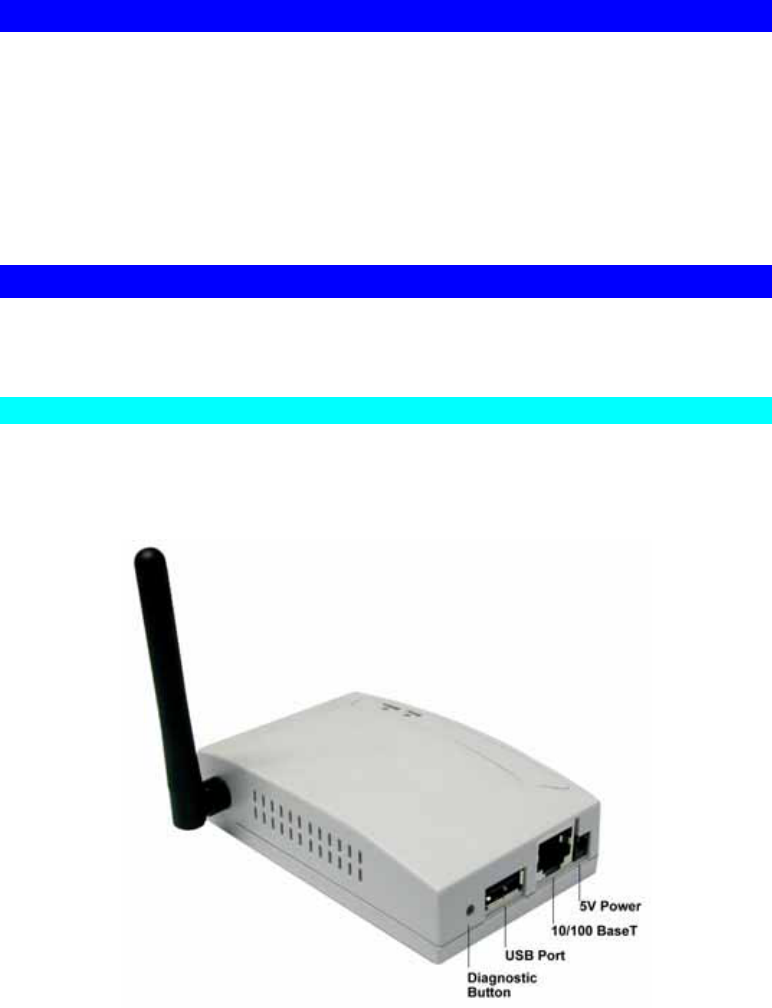
Page 3
Package Contents
You should find the following items packaged with your 802.11g Wireless Print Server. If any
items are missing, contact your dealer immediately.
• The 802.11g Wireless Print Server.
• Power Adapter.
• One CD-ROM containing all support programs and this manual.
• Quick Install Guide.
Physical Details
This section has details of the LEDs and connectors. Further details are contained in Appendix
A - Specifications.
PS801H 802.11g Wireless Print Server Connection
• 1 x USB 2.0 Printer Port
• IEEE 802.11g/802.11b Wireless Station
• 10/100BaseT LAN connection

Page 4
LED Indicators
There are two (2) LED indicators on the top panel - Status (Green, right) and Error (Red, left).
The LED indicator modes are described in the following table.
Status LED Error LED Status Description
Off Off No Power
On On Hardware error
On Off Normal operation (idle)
Blinking Off Normal operation - data is being transmitted or
received on the USB Printer Port.
Blinking Blinking During a Firmware Upgrade, both LEDs will blink.

Page 5
Diagnostic Push Button
The 802.11g Wireless Print Server is fitted with a Diagnostic Push Button. The button is
recessed; a pin or paper clip can be used to press it. This button has 2 functions:
• Restore the factory default settings
• Print a test page containing all current settings.
To restore the factory default settings:
1. Turn the 802.11g Wireless Print Server OFF.
2. Press and hold the diagnostic button. While pressing the button, switch the 802.11g
Wireless Print Server ON.
3. If you continue pressing the button for 10 seconds, a diagnostic page will be printed,
showing the new (default) settings.
To generate a Diagnostic print out
1. Ensure that both the 802.11g Wireless Print Server and the printer attached to port 1 are
ON.
2. Press the diagnostic button, and hold it in for 2 seconds.
3. The test page, containing the current settings, will be printed.
Note:
PostScript printers are unable to print this page. If you have a PostScript printer on Port 1,
the test page will not be printed.
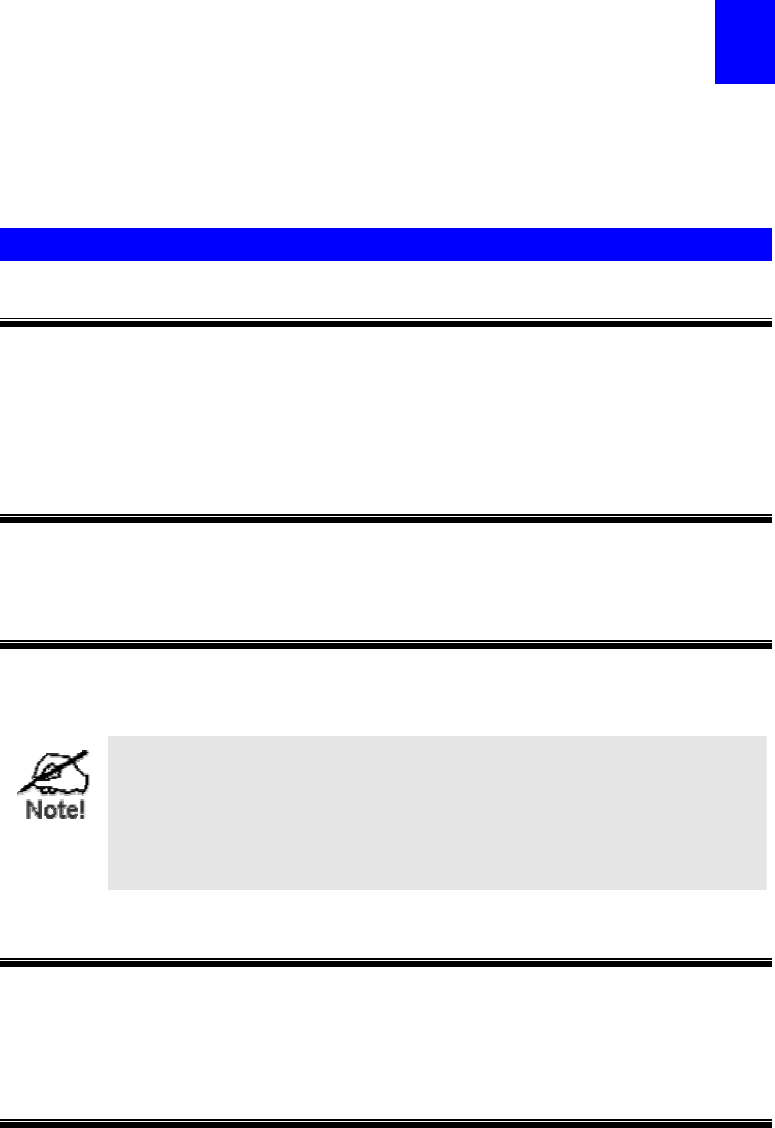
Page 6
Chapter 2
LAN Installation
This chapter describes how to install the 802.11g Wireless Print Server in your Local
Area Network.
Procedure
1. Preparation
• Ensure the power is OFF. Do not connect the 802.11g Wireless Print Server while power
is On.
• Find the Default Server Name for your 802.11g Wireless Print Server. The Default Server
Name is shown on a sticker on the base of the device. It consists of 8 letters and/or digits.
Record this name; it may be needed during configuration.
2. Connect the Printer or Printers
Connect the printer or plotter cable(s) to the appropriate port(s) on the 802.11g Wireless Print
Server unit.
3. Connect to your Network
Connect a standard network cable from your switch or hub to the 10/100BaseT LAN connector
on the 802.11g Wireless Print Server.
• To use the LAN interface, the LAN cable needs to be inserted
BEFORE powering ON.
• The Wired (LAN) interface should be used for initial configuration.
• In the default Wireless "Infrastructure" mode, connecting a LAN cable
will disable the Wireless interface. To use both the LAN and Wireless
interfaces, the Wireless mode must be changed to "Ad-hoc".
4. Power Up
Plug in the power adapter cable and power up. Start-up will take only a few seconds.
Use only the Power Supply unit provided with the device. Power Supply units for
different models are not interchangeable.
5. Check the LEDs
Once start-up is complete:
• The Status LED should be On.
• The Error LED should be Off.
2

Page 7
Chapter 3
Wireless Print Server
Configuration
This chapter provides an overview of the configuration process.
Overview
The 802.11g Wireless Print Server is designed to support many different platforms, and the
configuration required would depend upon the environment in which it is installed.
• The 802.11g Wireless Print Server usually requires configuration, but if there's a DHCP
server on your network, then the device is just plug-and-play. A Windows-based setup
Wizard is also provided on the CD-ROM to simplify this task.
• PCs wishing to use the printer attached to the 802.11g Wireless Print Server always
require configuration. See Chapter 4- Client Configuration for details.
• If you wish to use a queue-based printing system using Windows NT Server/Windows
2000/Windows XP, the Network Server must be configured as detailed in Appendix B -
Windows Server Configuration. However, it is not necessary to use a Network Server-
based queue; client PCs can print directly to the 802.11g Wireless Print Server using the
Peer-to-peer Printing installed by the User setup option on the CD-ROM.
Configuration Methods
The following methods are available to perform the required Print Server configuration:
• Windows-based Wizard - see below for details.
• BiAdmin management utility program - see Chapter 5 for details.
• Web-based setup - see Chapter 6 for details.
Advanced Configuration and Management
The BiAdmin management utility is provided for advanced configuration and management.
This program is installed by default when the Administrator install option is chosen. See
Chapter 5 for details on using BiAdmin.
Using the Windows Wizard
The Windows-based Wizard is supplied on the CD-ROM, and runs on Windows 95, 98, NT4.0,
ME, Windows 2000 and Windows XP.
Using this Wizard is the recommended method to configure the Print Server.
It can be used configure the 802.11g Wireless Print Server for your Network environment,
even if the Print Server does not have a valid IP address.
Procedure
1. Insert the supplied CD-ROM into your drive. If the setup program does not start
automatically, run SETUP.exe in the root folder.
3
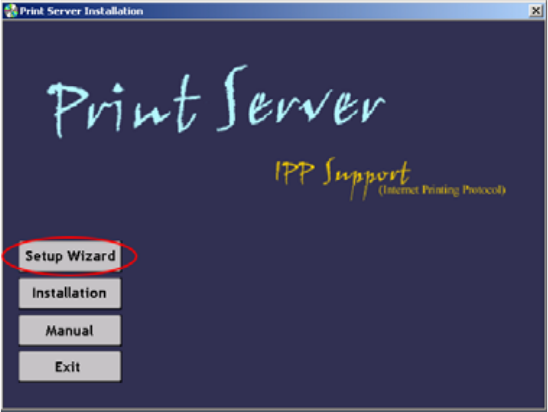
Page 8
2. On the first screen, shown below, click Setup Wizard.
Figure 1: 802.11g Wireless Print Server Screen
3. Click Next on the first screen of the Wizard, to view a list of 802.11g Wireless Print
Servers on your LAN.
4. Select your new 802.11g Wireless Print Server, then click Next to continue.
5. Enter the required data on the following screen.
• Name of the Print Server can be changed if you wish.
• Comment is optional.
• Select or enter the Workgroup name for this 802.11g Wireless Print Server.
6. Click Next to configure the TCP/IP Screen:
• Select Obtain IP Address automatically if your LAN has a DHCP Server, otherwise
select Fixed IP Address.
• For Fixed IP Address, enter an unused address from the range used on your LAN, or
click the Suggest New Values Button.
Use the same Network Mask and Gateway as PCs on your LAN.
7. On the Wireless Screens, the settings should be set to match your other Wireless Stations.
For details about each setting, refer to the following section Wireless Configuration.
8. Click Finish to save the data to the 802.11g Wireless Print Server.
Note: To install the Wizard on your PC, use the "Installation" option.
If the desired 802.11g Wireless Print Server is not listed:
• Check all cables to the 802.11g Wireless Print Server.
• Check that the 802.11g Wireless Print Server's Error LED is Off. If it is On, restart the
Print Server.
• Check that your PC and the 802.11g Wireless Print Server are on the same LAN segment.
(If you don't have a Router or Gateway on your LAN, you only have 1 segment.)
• Check that your PC has either the TCP/IP or NetBEUI network protocols installed. See
Checking your Network Protocols in Chapter 4for details.

Page 9
Wireless Configuration
Wireless Mode
The 802.11g Wireless Print Server is a Wireless station, NOT an access point. Like other
Wireless stations, they have 2 modes:
• Ad-Hoc mode - no Access Point is used, Wireless stations communicate directly with
each other. Each Wireless station should be set to use the same Channel, although some
Wireless stations will scan all channels to find compatible ad-hoc groups they can join
• Infrastructure (Default) - all Wireless stations connect to the Access Point. This allows
connection to both other Wireless stations and the wired LAN.
To use both the LAN and Wireless interfaces, the Wireless mode
must be set to "Ad-hoc".
In "Infrastructure" mode, connecting a LAN cable will disable the
Wireless interface.
Required Configuration
Ad-hoc Mode Infrastructure Mode
SSID The 802.11g Wireless Print Server will
join any group with the same SSID.
If there's no Ad-Hoc group available,
the 802.11g Wireless Print Server will
create the group using the SSID
assigned to it.
Must match the Access Point.
Channel The 802.11g Wireless Print Server will
join any group with the same Channel
number.
If there is no existing Ad-Hoc group
available, the 802.11g Wireless Print
Server will create the group using its
own Channel number.
Access Point sets the Channel
used.
Wireless stations
automatically locate the
correct channel.
WEP Settings Must match the other Wireless stations. Must match the Access Point.

Page 10
Chapter 4
Client PC Configuration
The chapter details the client configuration required on LAN clients to use the printer
or printers attached to the 802.11g Wireless Print Server.
Overview
Before performing client configuration, the 802.11g Wireless Print Server must be installed on
your LAN, and configured as described in Chapter 3. Both the 802.11g Wireless Print Server
and the attached printer must be powered ON.
Printing Methods
The 802.11g Wireless Print Server supports a number of printing methods:
• Peer-to-peer Printing means that the print jobs are stored (queued) on your PC, and sent
directly to the 802.11g Wireless Print Server when it is available.
• Server-based Print Queue means that all print jobs are stored (queued) on the Network
Server (e.g. Windows NT/2000) and then sent to the 802.11g Wireless Print Server. This
allows the Network Administrator to modify the Print Queue. For example, an important
job can be moved to the head of the queue.
• Windows SMB printing is a Microsoft standard for using a "Network Printer". No
additional software needs to be installed on your Windows PC, and printing from MS-
DOS programs is supported. However, because the 802.11g Wireless Print Server can not
store files, large print jobs may cause problems.
• AppleTalk is also supported, and normally no configuration of the 802.11g Wireless Print
Server is required. See the Macintosh section of this chapter for details of client
configuration.
Which printing method should I use?
• If using Windows 95, 98, NT, Me, 2000, or XP, the easiest method to use is Peer-to-peer
Printing.
• If using Windows, and you need to print from MS-DOS programs, or you don't wish to
install additional software, use SMB.
However, SMB is not suitable for large, complex documents, so if you need this as well as
MS-DOS printing, you should install BOTH Peer-to-peer Printing and SMB printing. MS-
DOS programs can use the SMB printer, Windows programs should use Peer-to-peer
Printing.
• If your LAN has Network Servers (e.g. Windows NT, Windows 2000 Server) use the
method advised by your Network Administrator. The 802.11g Wireless Print Server can
print via a queue located on a Network server, if desired.
• Unix users - refer to Appendix C.
• Macintosh users - refer to the Macintosh section of this chapter.
4
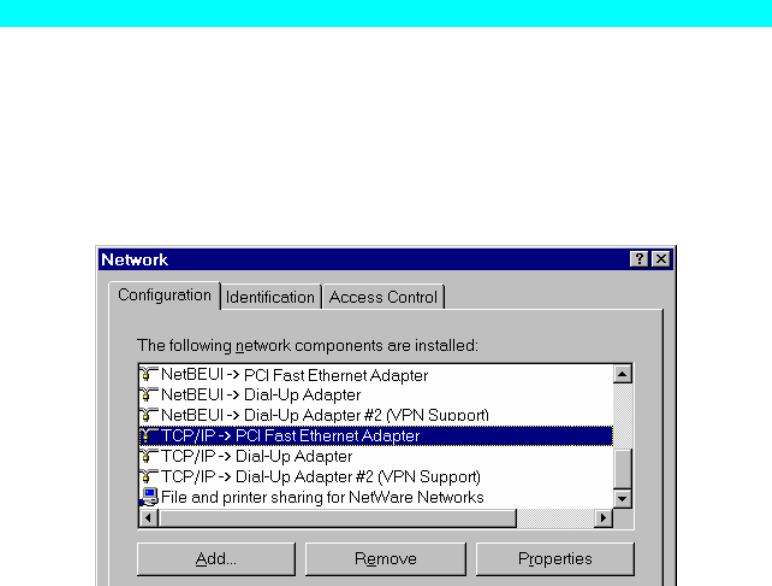
Page 11
Checking your Network Protocols (Windows 9x)
Your PC must have EITHER the TCP/IP or NetBEUI protocols installed. (All versions of
Windows after Windows 95 have TCP/IP installed by default.)
• If using the Peer-to-peer Printing, the installation program will check this for you.
• If using other methods, you must check manually, as follows:
1. Select the Settings - Control Panel - Network option on the Start Menu. You should see a
screen like the one following:
Figure 2: Network Configuration
• The top line in the list (NetBEUI -> PCI Fast Ethernet Adapter) indicates that the
NetBEUI protocol is installed on this PC. Your PC will show the name of the your
Network card rather than "PCI Fast Ethernet Adapter".
• The highlighted line (TCP/IP -> PCI Fast Ethernet Adapter) indicates that TCP/IP is
installed. Your PC will show the name of the your Network card rather than "PCI Fast
Ethernet Adapter".
2. If neither line is present:
• Install the NetBEUI protocol by selecting Add - Protocol - Microsoft - NetBEUI - OK.
You may be prompted for your Windows CD-ROM.
This protocol requires no configuration.
• If required, you can also install TCP/IP. However, depending on your LAN
environment, TCP/IP may require further configuration.
3. If either protocol is already installed, proceed with installation.
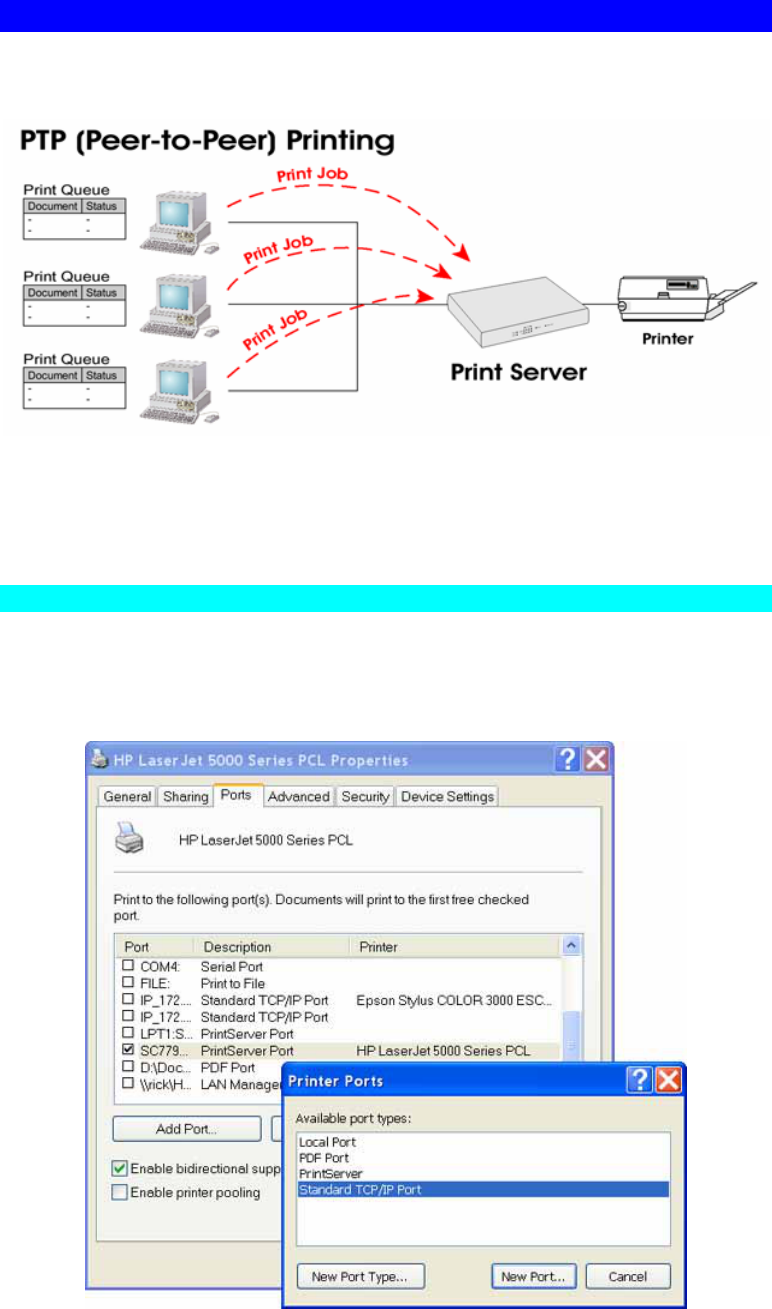
Page 12
Windows Peer-to-peer Printing
With this printing method, print jobs are stored (queued) on your PC, and then sent to the
802.11g Wireless Print Server when it is available.
Figure 3: Peer-to-Peer Printing
Windows 2000 & XP require no additional software.
For other versions of Windows, the supplied PTP (Peer-to-Peer) Printer Port software must be
installed on each PC.
Windows 2000/XP Setup
The recommended printing method is to use LPR, as follows:
1. Open your Printers folder, right-click the desired printer and select Properties.
2. Select the Ports tab and click the Add Port button.
Figure 4: Printer Ports Screen
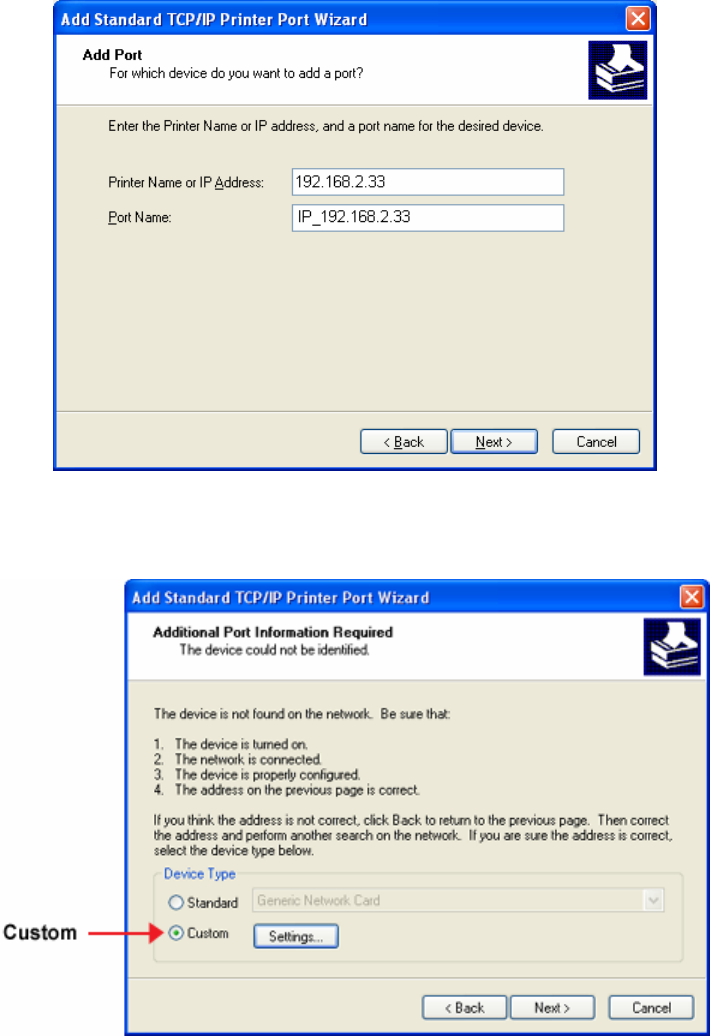
Page 13
3. Choose Standard TCP/IP Port, then click New Port.
Figure 5: Add Port Screen
4. On the Add Standard TCP/IP Printer Port screen above, enter the IP Address of the Print
Server in the Printer Name or IP Address field, then click Next.
Figure 6: Additional Port Information Screen
5. On this screen, select Custom, and click the Settings button.
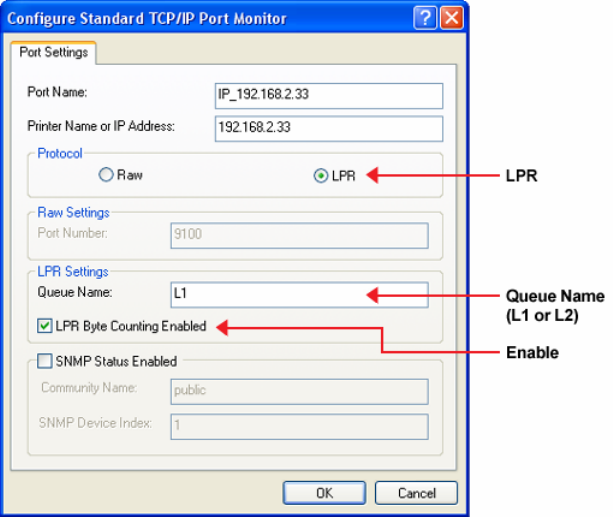
Page 14
Figure 7: Port Settings Screen
6. On the Port Settings screen, shown above:
• Select LPR in the Protocol section
• Enter a Queue name (L1 for the USB Port)
• Ensure the LPR Byte Counting Enabled setting is Enabled.
• Click OK to confirm your changes and close this screen.
7. Follow the prompts to complete the Wizard.
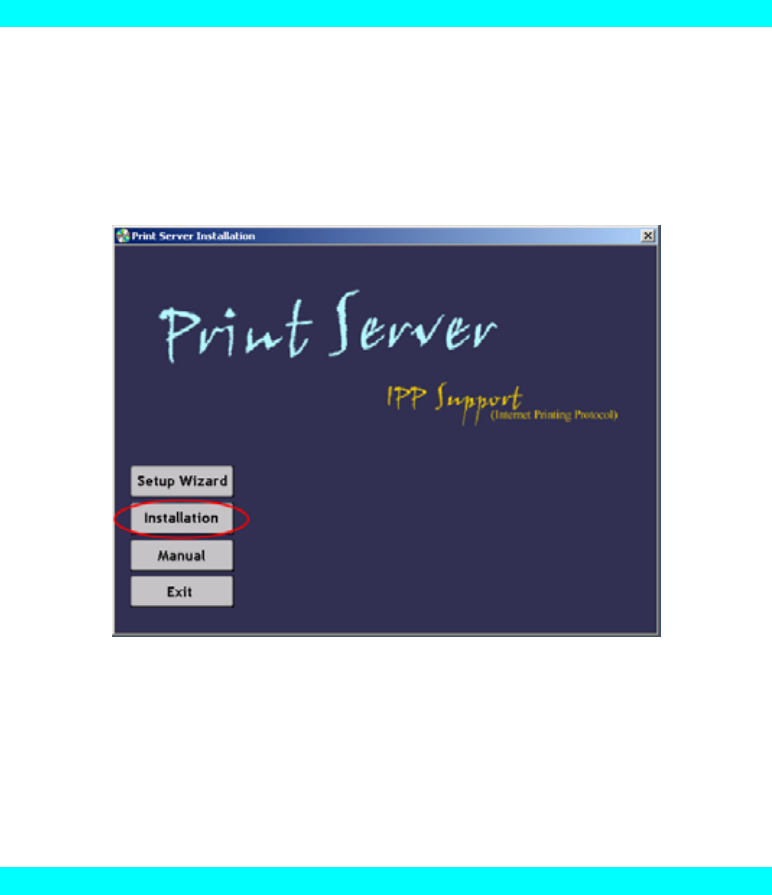
Page 15
Windows 9x/ME Setup
Before performing the following procedure, the 802.11g Wireless Print Server must be
installed on your LAN, and configured as described in Chapter 3. Both the 802.11g Wireless
Print Server and the attached printer should be powered ON.
1. Insert the supplied CD-ROM into your drive. If the setup program does not start, run
SETUP.exe in the root folder.
2. Click Installation button, then select the User Install.
Figure 8: Installation Screen
3. Follow the prompts to complete the installation of the Peer-to-peer Printer Port Driver.
(Refer to the Windows section of Chapter 8 - Troubleshooting if there is a problem with
the installation.)
4. The Print Driver Setup will then run.
In future, you can use Start - Programs - PrintServer Driver - Printer Port Setup to run the
program again.
PTP Printer Port Setup
1. The program will search for Printer Servers on the network, and a screen like the
following will be displayed.
• If desired, click Refresh.
• The name of the attached printer will be displayed if possible. If "No printer" is
displayed, check that the printer is properly connected and powered on.
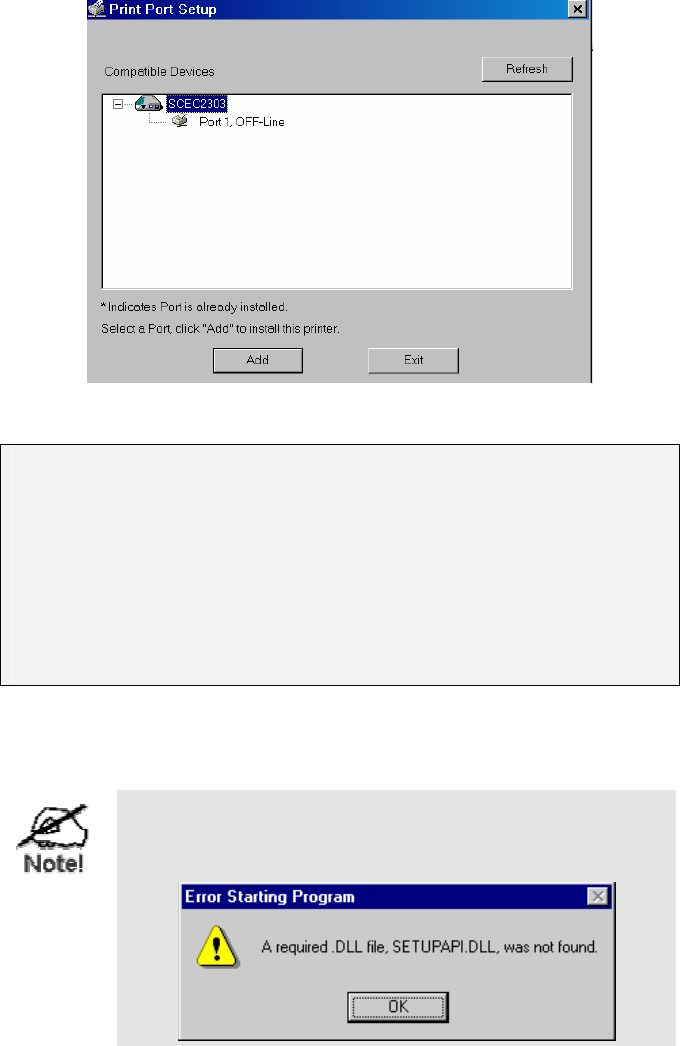
Page 16
Figure 9: Print Port Setup (Peer-to-peer Printing)
If your 802.11g Wireless Print Server is not listed:
• Click the "Refresh" button.
• Check that both the 802.11g Wireless Print Server and the printer are
properly connected, and powered on.
• Check that the 802.11g Wireless Print Server has been configured. (Use the
Setup Wizard on the CD-ROM.)
• If using TCP/IP, try installing the NetBEUI protocol. (See the earlier section
Checking your Network Protocols for details.). Then try again.
2. Select the desired port on a 802.11g Wireless Print Server, then click Next. A pop-up
message will inform you if the port has been created successfully.
If you see the following error message, either install Internet
Explorer 4 or later, or follow the procedure in the "Trouble
Shooting - Windows" section of Chapter 8.
3. The printer port will be created, then a screen like the following will be displayed.
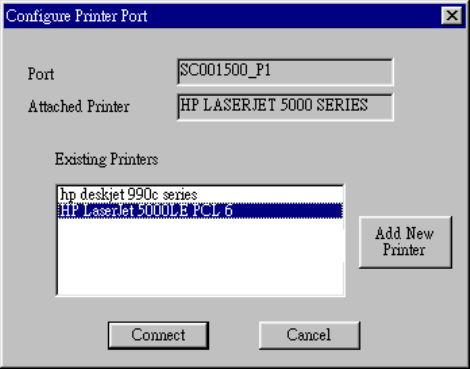
Page 17
Figure 10: Configure Printer Port
4. Select the correct Windows printer in the Existing Printers list, and click the Connect
button.
If the correct printer type is not listed, click "Add New Printer" to run the Windows Add
Printer wizard. Step through the Wizard and install the required printer:
• Select the correct Printer Manufacturer and Model, or use the "Have Disk" option if
appropriate.
• We recommend changing the Printer name to indicate which device is on.
(e.g. HP2100 on SCA43600_P1)
• If prompted about Sharing the printer, do NOT enable Sharing.
• When the Printer installation is finished, it will be listed in the Configure Printer Port
screen above. Select it and click Connect.
5. Installation is now complete. You can now print using this printer.
• To install additional Printers, repeat steps 4.
• Use the Start menu to run this program in future. The default installation is Start -
Programs - PrintServer Driver - Print Driver Setup.
Note:
If using the Epson Spooler Manager, this program must be disabled, as follows:
1. Run the Epson Spooler Manager.
2. Select "Queue Setup" from the menu.
3. Click "Use Print Manager for this port".
4. Click "OK" to exit.
Management
• Print jobs can be managed like any Windows printer. Open the Printers folder (Start -
Settings - Printers) and double-click any printer to see the current print jobs.
• If the printer attached to the 802.11g Wireless Print Server is changed, just run this
program again, and select the correct printer.
• To delete a port created by this setup program, use the Windows Delete Port facility:
• Right-click any printer in the Printers folder, and select Properties.
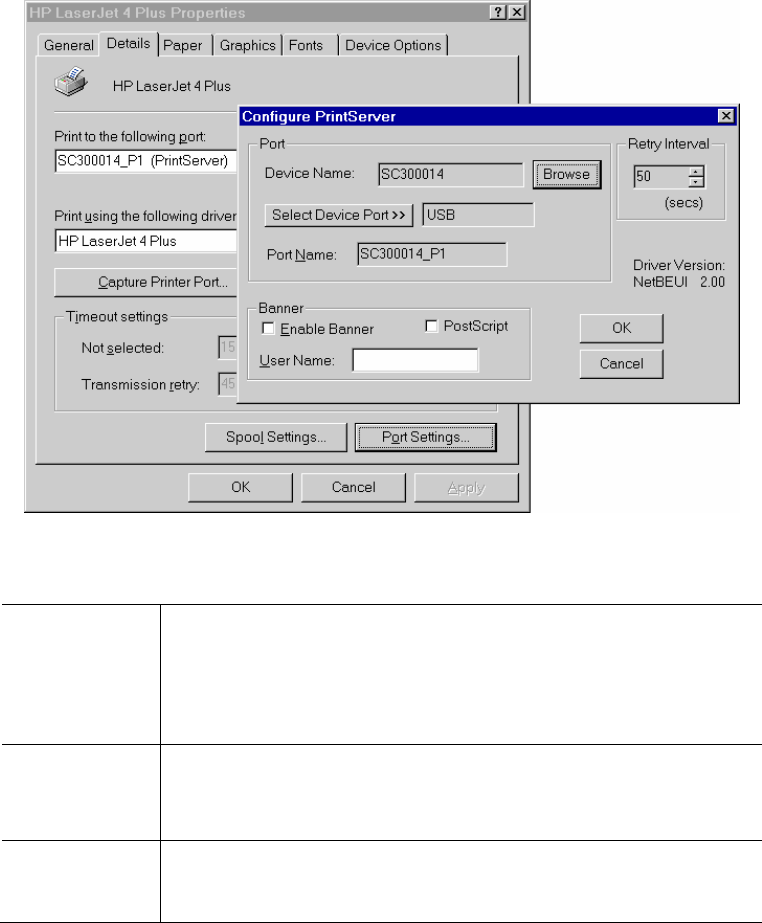
Page 18
• Locate the Delete Port button. This button is on the Details or Ports tab, depending on
your version or Windows.
• If the 802.11g Wireless Print Server's IP Address is changed, and you can no longer print,
delete the port (see procedure above) and re-install it.
Advanced Port Options
The options for the Peer-to-peer Printing are accessed via the Port Settings button.
Use Start - Settings - Printers to open the Printers folder, then right-click the Printer, and select
Properties. The Port Settings button is on the Details or Ports tab, depending on your version
of Windows.
An example screen is shown below:
Figure 11: Port Settings (Peer-to-peer Driver)
Items shown on this screen are as follows:
Port If desired, click Browse to select a different 802.11g Wireless Print
Server. If the selected device has multiple ports, the Select Device Port
button can be used to select the port.
The Port Name can not be changed after installation. This name is
shown in the Printer's Properties.
Banner Check this option to print a banner page before each print job.
• If using a PostScript Printer, check the PostScript box.
• The User Name will be printed on the banner page.
Retry Interval Sets how often Windows will poll the 802.11g Wireless Print Server to
establish a connection when the printer is busy. Increase this value if
you get too many warning messages.
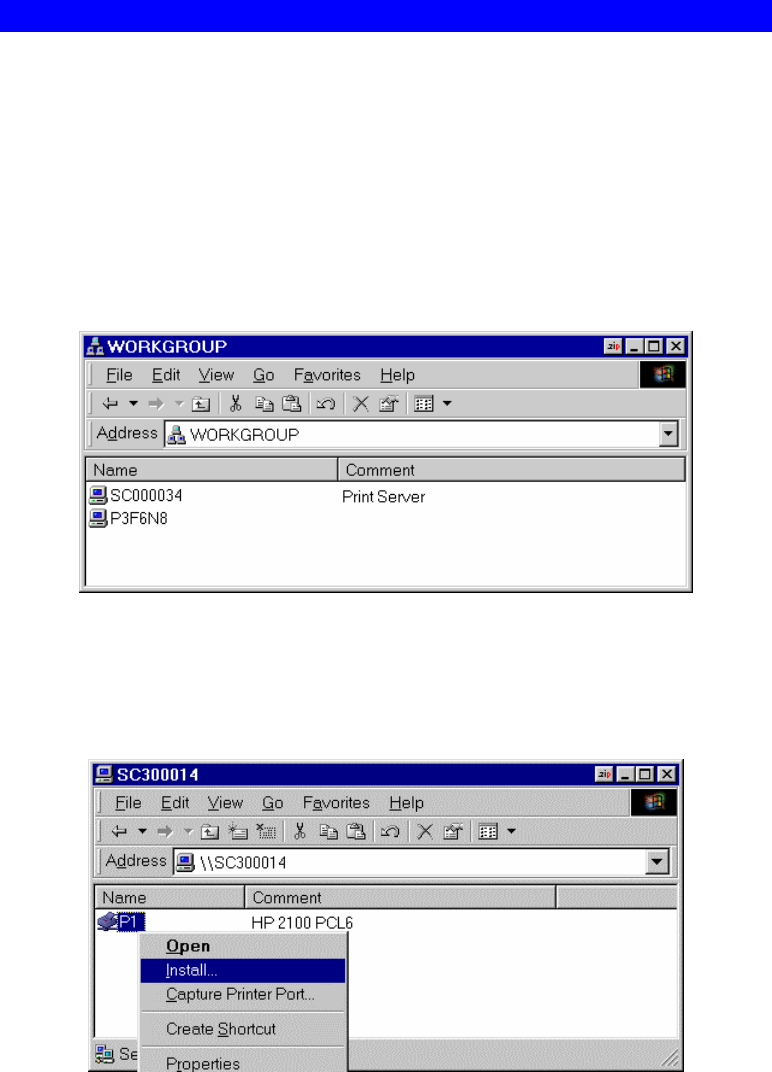
Page 19
Windows SMB Printing
This method requires no additional software to be installed, but the NetBEUI or TCP/IP
protocol must be installed on your PC. Use the following procedure to install the 802.11g
Wireless Print Server's printer as a Windows SMB network printer:
1. Double-click the Network Neighborhood icon on the desktop.
2. On the View menu, select Details.
3. Locate the desired 802.11g Wireless Print Server, as shown below:
• If it is the same Workgroup as your PC, it will be listed on screen.
• If it is in a different workgroup, double-click Entire Network, then double-click the
appropriate Workgroup to open it.
Figure 12: Network Neighborhood
4. Double-click the 802.11g Wireless Print Server icon to view a Printer icon for each printer
port. The "Comment" field may indicate what type of printer is connected to the port.
5. To install a printer, right-click the desired printer icon, and choose "Install", as shown
below. This will start the Add Printer wizard.
Figure 13: Install SMB Printer
6. Follow the prompts to complete the installation.
• For information about the question "Do you print from MS-DOS programs?", see
Printing from MS-DOS Programs below.
• Select the Printer Manufacturer and Model to match the printer connected to this port
on the 802.11g Wireless Print Server, and complete the Wizard.
7. This printer will now appear in your Printers folder (Start - Settings - Printers) and can be
used like any other printer. However, SMB printing is not suitable for large complex print
jobs - you should use the Peer-to-peer Printing instead.
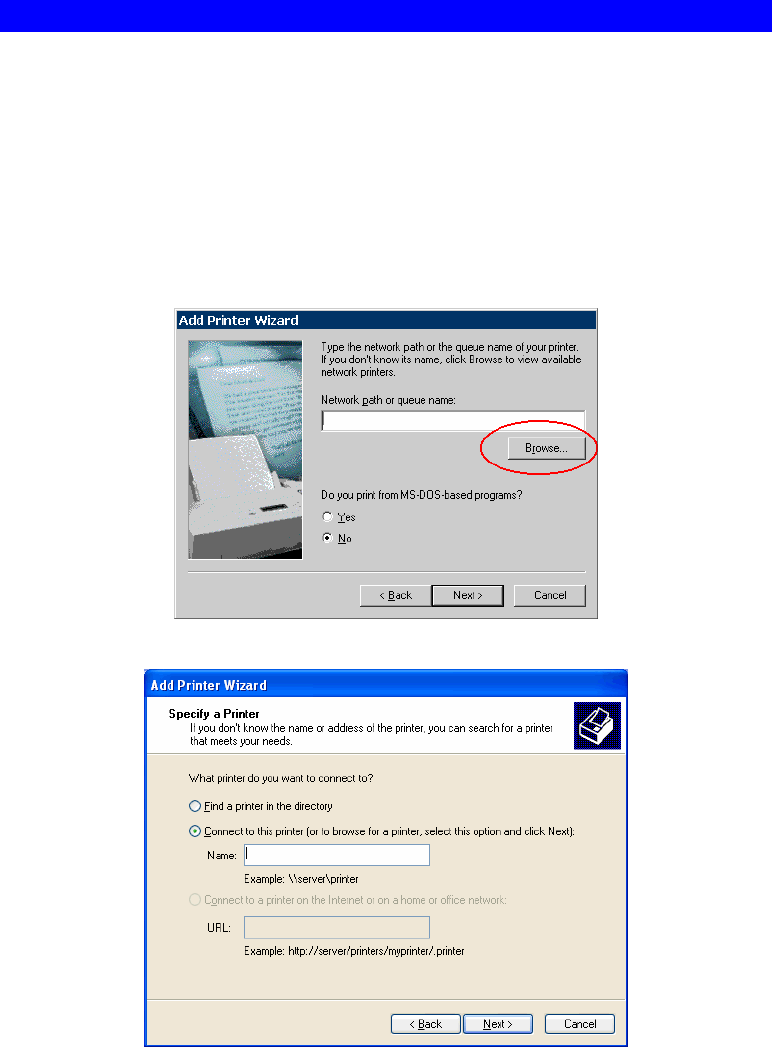
Page 20
Windows with Server-based Print Queues
With a Server-based Print Queue, the Print Server is installed on an existing Network Server
(Windows, Unix, or NetWare), rather than on your PC. If your Network Administrator uses
this system, each Windows client must be set up as follows:
1. Open your Printers folder, and start the Add Printer Wizard.
2. When prompted, select Network Printer.
3. When prompted for Network Path or Queue Name:
• On Windows 98/ME, click the Browse button
• On Windows 2000/XP, leave the field blank and click Next
Figure 14: Network Path - Windows 98/ME
Figure 15: Network Path - Windows XP
4. Browse the network, and locate the Server and Printer (or Print Queue) which your
Network Administrator advised you to use.
5. Click OK, then Next.
6. Select the correct printer Manufacturer and Model, as advised by your Network
Administrator, and click Next.
7. Follow the prompts to complete the Wizard.
The new printer will be listed with any other installed printers, and may be selected when
printing from any Windows application.

Page 21
Macintosh (AppleTalk)
The 802.11g Wireless Print Server supports AppleTalk (EtherTalk), PAP, ATP, NBP, ZIP and
DDP protocols, enabling Macintosh computers on the network to view and use the 802.11g
Wireless Print Server as a regular AppleTalk printer.
Normally, no configuration is required.
Software Requirements
System 9.x OS or newer.
AppleTalk Setup
1. Click the apple icon and choose Control Panel - AppleTalk.
2. Ensure that Ethernet is selected under AppleTalk Connection.
3. Click Chooser. The Chooser panel will open.
4. Click on either the LaserWriter 8 icon (recommended) or the LaserWriter 7 icon.
LaserWriter 8 makes use of the fonts installed in the printer itself, so the printing response
time is quicker. LaserWriter 7 uses the fonts installed in the computer, which increases
network traffic and takes more printing time.
5. Choose a PostScript printer from the list.
6. Click Create and it will search PPD automatically.
7. Select a printer description from the list.
8. Click Select.
Configuration is now complete.
Printing
Printing with the 802.11g Wireless Print Server installed in an AppleTalk network is identical
to normal printing. Just select File - Print and choose the desired printer.
Advanced Setup and Management
In a mixed Windows PC/Macintosh environment, you can use BiAdmin to configure the
802.11g Wireless Print Server. See Chapter 5 for details on installing and using BiAdmin.
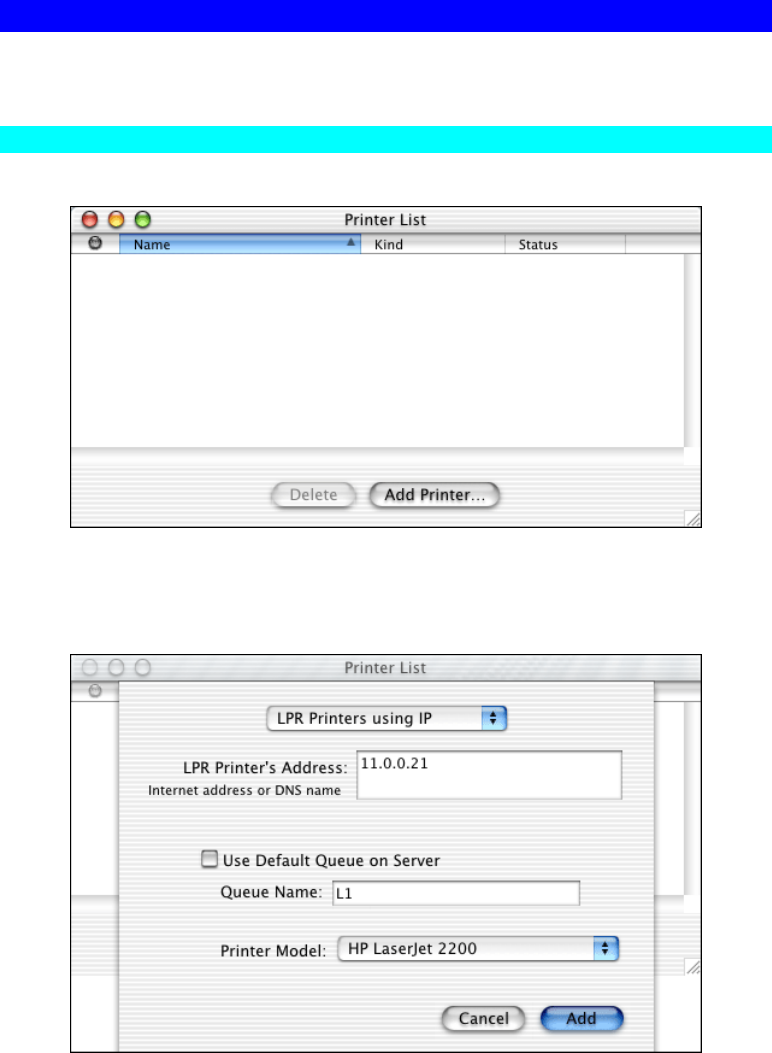
Page 22
Macintosh OS X
If using LPR printing, you need to ensure the 802.11g Wireless Print Server has a valid IP
address before configuring your Mac as follows.
LPR printing Setup
1. Select the Printer List icon.
Figure 16: Printer List
2. Click the Add Printer button.
3. Choose LPR Printers Using IP.
Figure 17: LPR Screen
4. Enter the IP address of the Print Server in the LPR Printer's Address field, and enter the
Queue Name (L1 for port 1, L2 for port 2 if the 802.11g Wireless Print Server has 2 printer
ports.).
5. Select the Printer Model from the drop-down list.
6. Click Add.
Configuration is now complete.

Page 23
Chapter 5
BiAdmin Management Utility
This chapter describes the installation and operation of the BiAdmin Configuration &
Management program.
Requirements
This program requires:
• Windows 95, Windows 98 or ME
• Windows NT 4.0, Windows 2000 or XP
Additional Recommendations:
• Screen resolution of 800 * 600 or greater.
Installation
Use the supplied CD-ROM. This CD-ROM will usually auto-run. If auto-run is disabled on
your PC, run the SETUP.exe program in the root folder.
Select Installation and this will give you the options for BiAdmin installation:
• BiAdmin is always installed if the Administrator option is chosen.
• If using the Custom option, select BiAdmin.
Operation
• Start the program by using the icon created by the setup program.
• When run, the program searches the network for all active 802.11g Wireless Print Servers,
then lists them on screen, as shown by the example screen below.
5
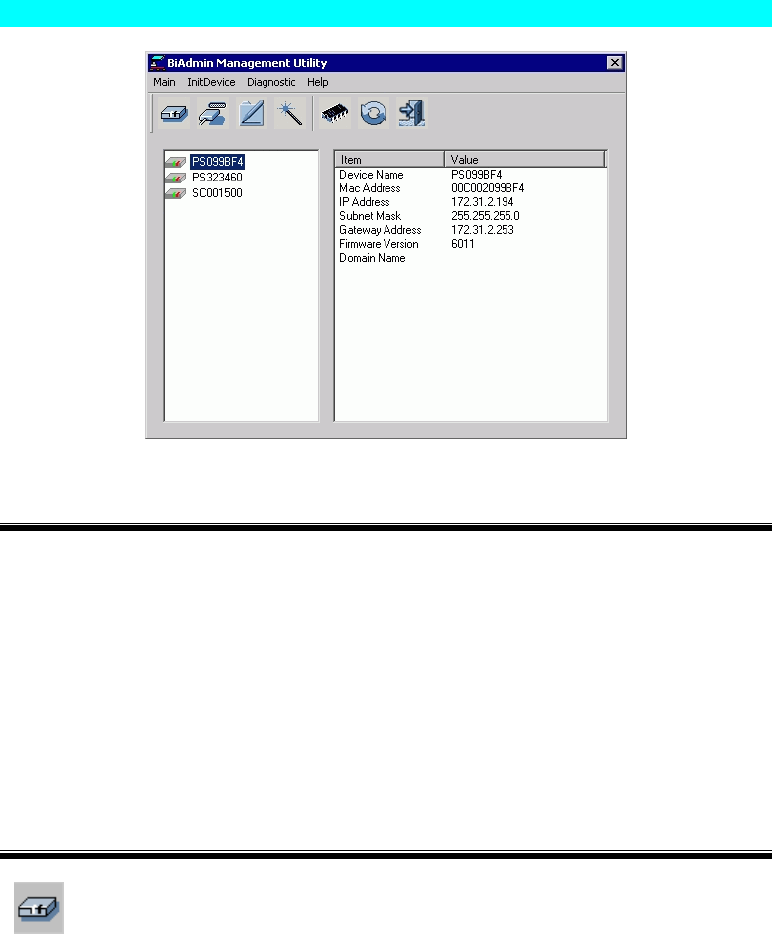
Page 24
Main Screen
Figure 18: BiAdmin Main Screen
Device List
The left panel displays a list of all 802.11g Wireless Print Servers found on the network. When
a 802.11g Wireless Print Server is selected from the list, its details are displayed in the right
panel.
Note: If the IP address is "Null", please click the Refresh icon to get the value again.
If the desired 802.11g Wireless Print Server is not listed, try the following:
• Check that the device is installed and ON, then Refresh the list.
• If the 802.11g Wireless Print Server is on another LAN segment, use the InitDevice -
Attached Remote menu option to locate and display the 802.11g Wireless Print Server.
Icons
Device Status
Menu equivalent: Main - Device Status
All of the settings for the current device are displayed in a read-only scrollable list
in the left panel.
You can use the "Save to File" and "Restore to Device" buttons on this screen to
save a copy of the selected device's CONFIG file to your PC, or restore a
previously saved file to the selected 802.11g Wireless Print Server.
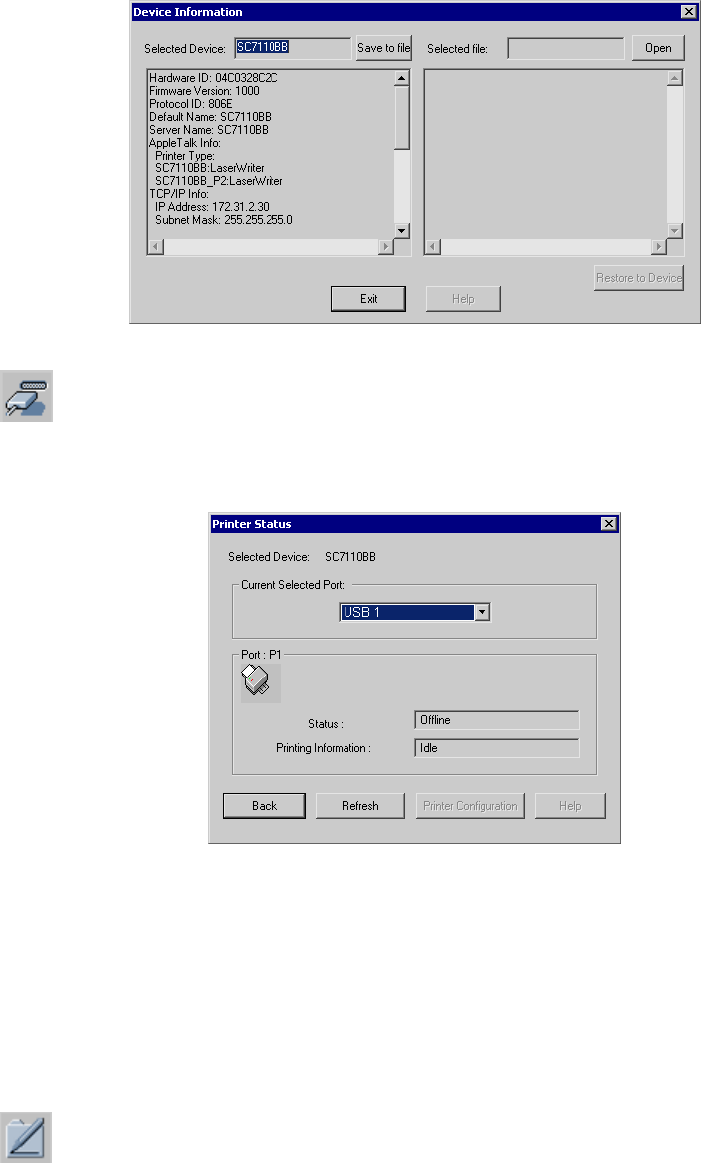
Page 25
Printer Status
Menu equivalent: Main - Printer Status
After selecting this icon, a Detail button will be available to show more
information about the printer.
If the selected Print Server has multiple ports, you can select the desired port from
the drop-down list to display the current status of the printer attached to the port.
Possible states are:
• Status - On-line, Off-line, or Out of Paper
• Printing Information - Idle, Printing
If the printer is Bi-directional, and is not busy, the Configuration button will be
available, allowing you to change the configuration of the attached printer. This
button will be grayed out if the printer does not support this option, or if the
printer is busy printing.
Configuration
Menu Equivalent: Main - Configure
This option allows you to configure the selected 802.11g Wireless Print Server
See the following section for details.

Page 26
Wizard
This 802.11g Wireless Print Server Wizard allows you to do the basic
configuration for the selected device. The screens are similar to the Wizard run
from the CD-ROM, as described in Chapter 3.
Upgrade
Menu Equivalent: Main - Upgrade
This option allows you to upgrade the firmware for the selected 802.11g Wireless
Print Server. Before using this option, you need to obtain the .BIN file for the
firmware upgrade, and copy it to the same directory as BiAdmin.
Refresh
Menu Equivalent: Main - Refresh
Select this icon to update the 802.11g Wireless Print Server device listing after
changing the name or IP Address.
Exit
Menu Equivalent: Main - Exit
Exit the BiAdmin program. This does not save any changes you have made; you
must Save to Device on each screen.
Menus
Main Menu
Device Status Same as Device Icon.
Printer Status Same as Printer Status Icon.
Configure Same as Configure Icon.
Upgrade Same as Upgrade Icon.
Refresh Same as Refresh Icon.
Exit Same as Exit Icon.
InitDevice Menu
Reset Device This will cause the device to reboot. This should be done after
making any configuration changes, or if the device stops responding
after some problems.
Restore to Factory
Default This will restore ALL device values to their factory defaults. To
restore only the current screen, use the Set to Default button on the
screen.
Attached Remote This is used to connect to a 802.11g Wireless Print Server device on
another LAN segment. You need to know the IP address of the
remote 802.11g Wireless Print Server.
If your LAN does not have a Router, you can ignore this option.
Connected
Protocol This option allows you to designate which LAN protocol will be used
for communication between the selected device and this application.
You should select ONE protocol only.
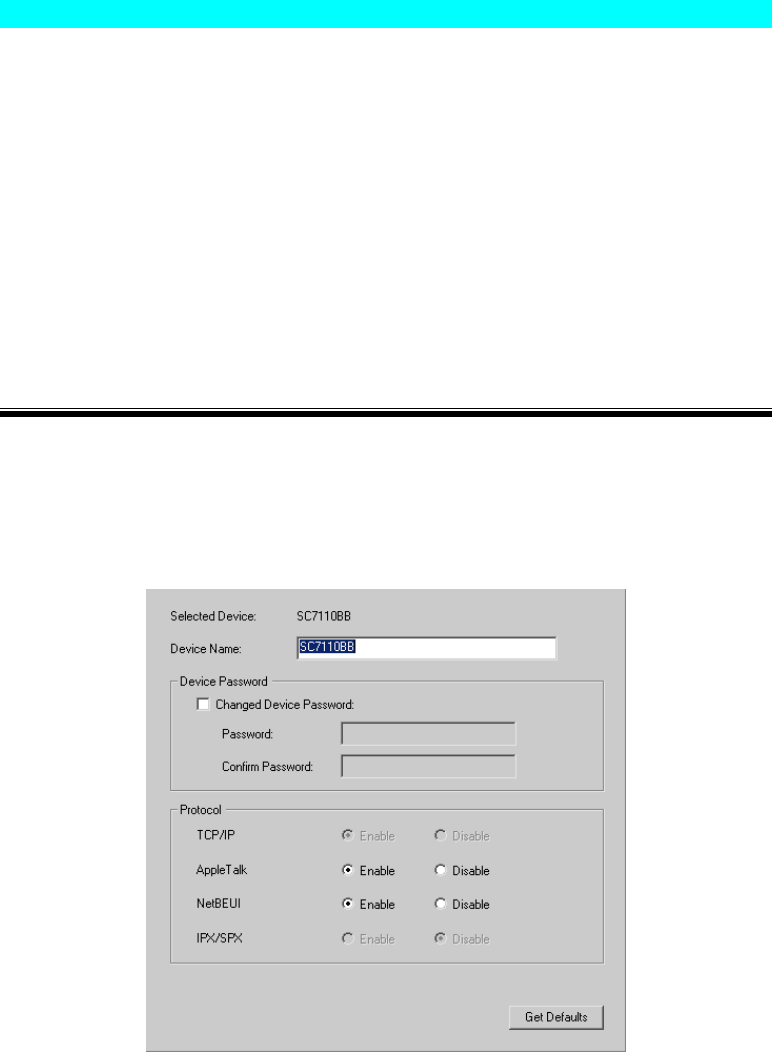
Page 27
Diagnostics menu
Print Test Page Use this option to print a test sheet from the selected 802.11g
Wireless Print Server port. The test print out will include status
information.
Configuration
When the Configuration icon is clicked, or the Configure option on the Main menu is selected,
a tabbed window will open. The tabs available will vary depending on the model selected. For
the 802.11g Wireless Print Server, the following tabs are available:
• System
• TCP/IP
• AppleTalk
• NetBEUI
• Internet Printing
• Port
• Wireless
System Tab
This screen allows you to:
• Change the name of the 802.11g Wireless Print Server.
• Change the "Password" for the 802.11g Wireless Print Server.
• Set the Network Protocols used the selected 802.11g Wireless Print Server. (Any protocols
not used on your LAN may be disabled. This may improve performance.)
Figure 19: System Screen
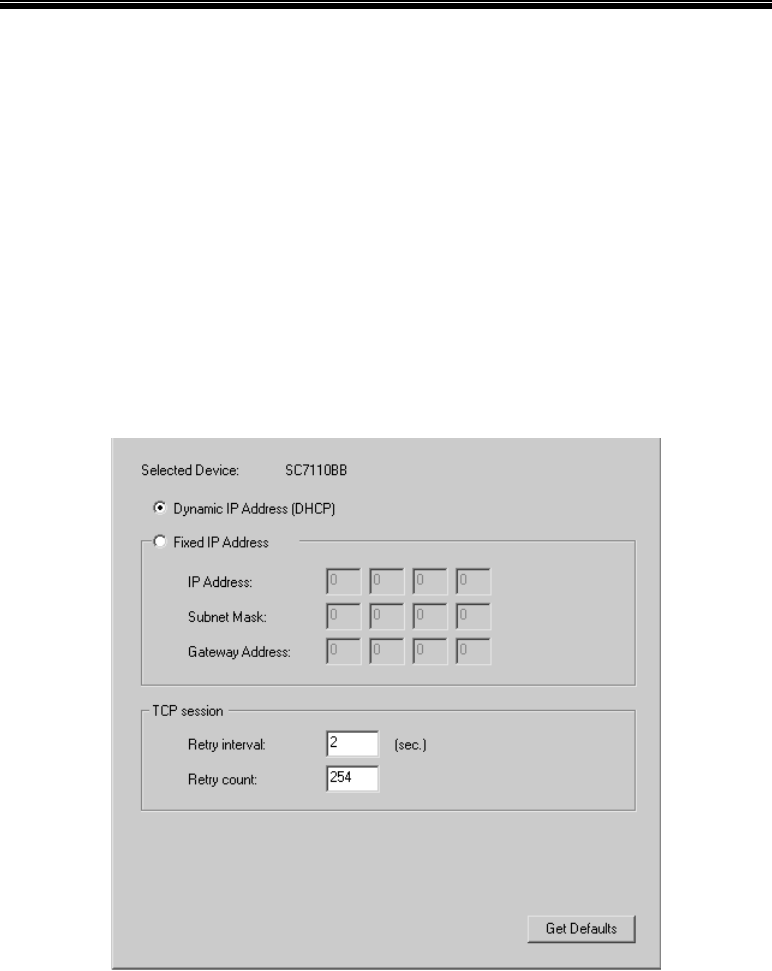
Page 28
TCP/IP Tab
Selecting this tab will allow configuration for the TCP/IP network protocol. The basic options
are:
• Dynamic IP Address (DHCP) - The IP address is obtained automatically, from a DHCP
Server on your network.
• Fixed IP Address - You must enter the IP address, Subnet Mask, and Gateway Address.
• IP Address - Select an unused IP address from the address range used on your LAN.
• Subnet Mask - Use the same values as PCs on your LAN (or on the same LAN
segment, if you have a Router).
• Gateway - Use the same values as PCs on your LAN (or on the same LAN segment, if
you have a Router).
The 802.11g Wireless Print Server also supports the Auto-IP function. If the 802.11g Wireless
Print Server is set to Dynamic IP Address, but there's no DHCP server found on the network,
the 802.11g Wireless Print Server will get an IP from the range of 169.254.1.1 ~
169.254.254.254 automatically. In this case, even though the 802.11g Wireless Print Server
was initialized with an Auto-IP, it will change to DHCP whenever a DHCP server is detected.
Figure 20: TCP/IP Screen
The TCP session parameters should only be changed if advised to do so by your Network
Administrator or Print Server Technical Support.
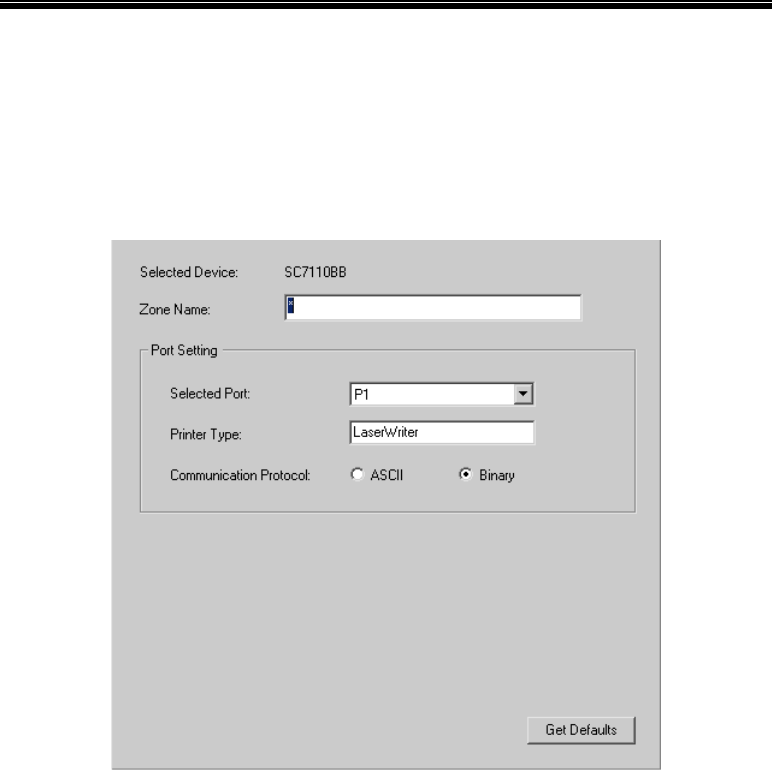
Page 29
AppleTalk Tab
Generally, no 802.11g Wireless Print Server configuration is required in order to use
AppleTalk.
This screen allows you to:
• Set the Zone Name field to determine which Apple systems can gain access to this printer.
• The Printer Type field is used to describe the printer driver used for each port.
• Set Communication Protocol to ASCII or Binary. This must match the setting on the
Apple computer systems using the 802.11g Wireless Print Server.
Figure 21: AppleTalk Screen
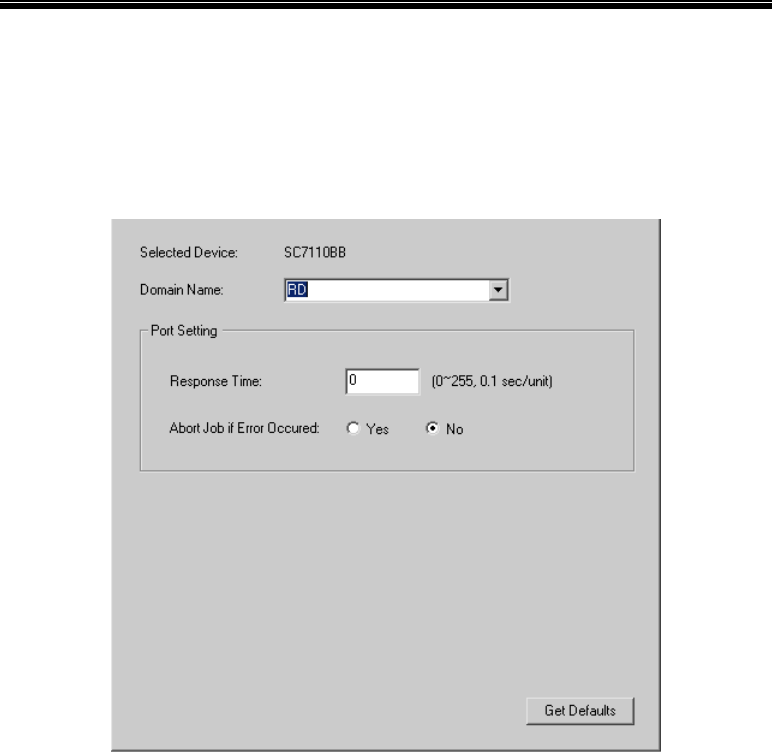
Page 30
NetBEUI Tab
This screen allows you to:
• Choose the Domain name for the selected 802.11g Wireless Print Server.
• Set how fast jobs are sent to the printer by using the Response Time field.
• Set the desired option for the Abort Job if Error Occured setting.
• YES causes a print job to be terminated if a printing error occurs.
• NO (default) will try to continue but may cause print errors.
Figure 22: NetBEUI Screen
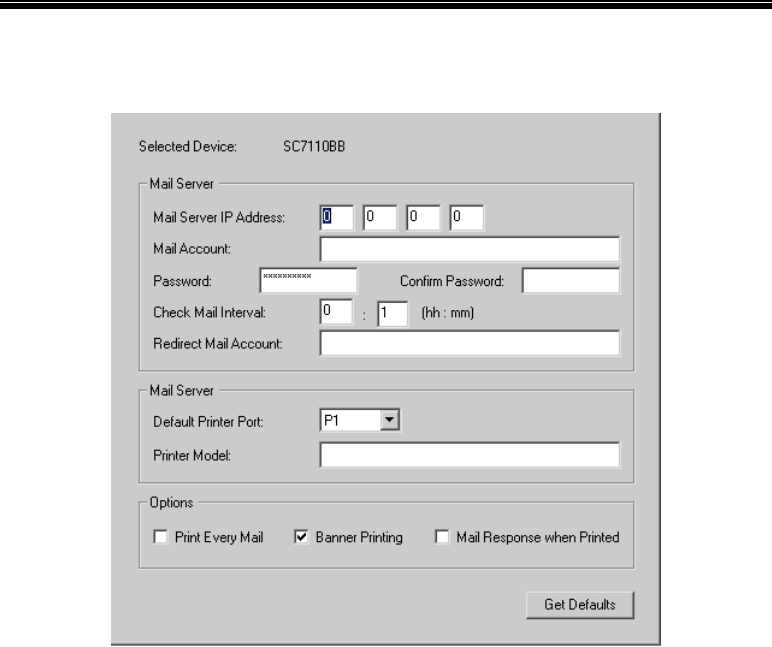
Page 31
Internet Printing Tab
The Internet Printing feature allows you to send print jobs to the Print Server using Internet E-
mail.
Please see Internet Mail Printing Configuration for details of using this feature.
Figure 23: Internet Printing Screen
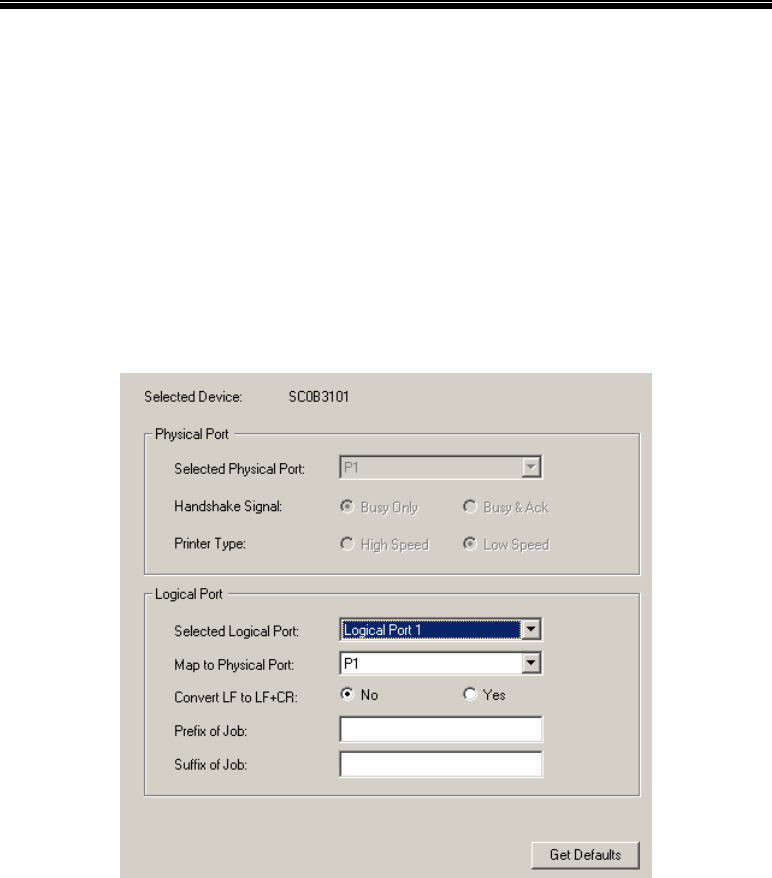
Page 32
Port Tab
Logical Port
Logical Ports (printers) can be used in the Unix environment. The following settings are
available:
• Selected Logical Port - Select the Logical Printer Port you wish to configure.
• Map to Physical Port - Select the physical Printer Port which the Logical printer will use.
• Convert LF to LF+CR - If checked, LF (line feed) characters are changed to CR+LF
(carriage return + line feed).
• Prefix of Job - The printer control string (in hex) to be sent to the printer before each print
job. This string cannot exceed 15 characters.
• Suffix of Job - The printer control string (in hex) to be sent to the printer after each print
job. This string cannot exceed 15 characters.
Figure 24: Port Screen
The Get Defaults button will reset all settings to their factory-default values.
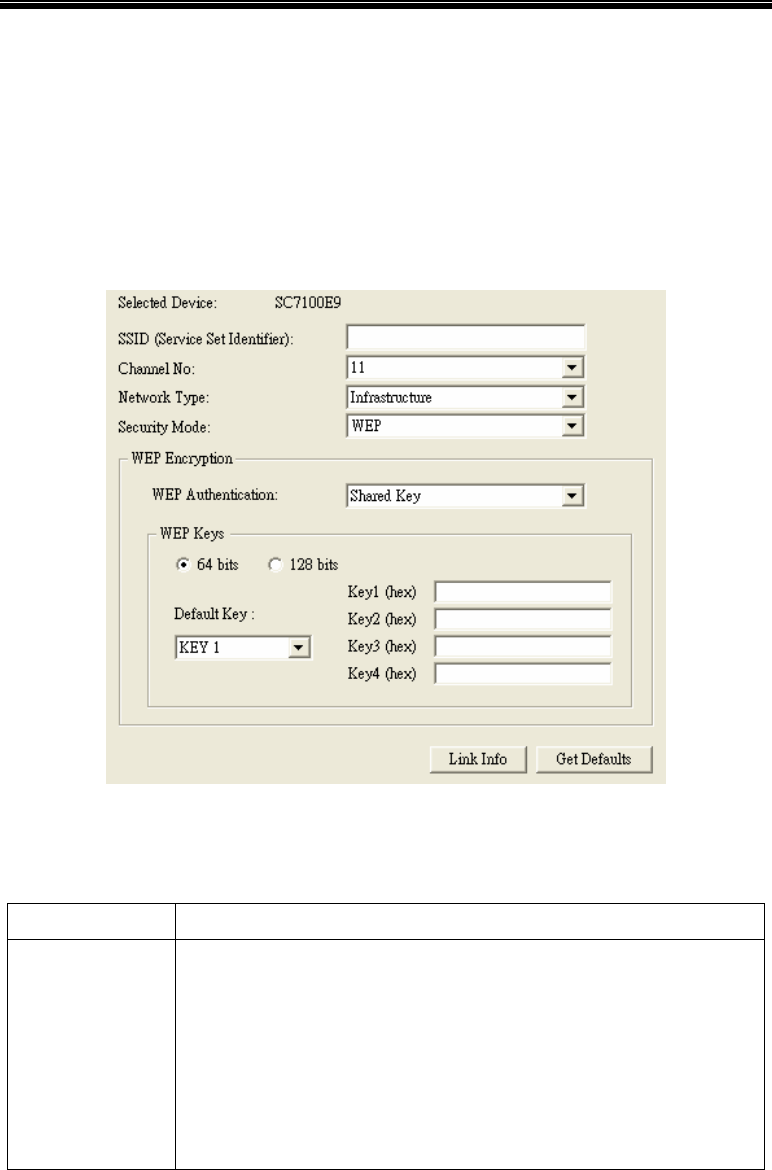
Page 33
Wireless Tab
This tab will be available if the selected device has Wireless capability.
The screen will change according to the Security Mode selection, which has 3 options:
• Disabled – no data encryption is used.
• WEP – see below for details.
• WPA – see the following section for details.
WEP Encryption
If the Security Mode is set to WEP, the screen will look like the following example.
Figure 25: Wireless Screen
Change the settings to suit your environment. Generally, you must match the settings of other
'Wireless stations. The available settings are described below.
Selected Device This shows the name of the Print Server.
SSID • If using an ESS (Extended Service Set, with multiple access
points) this ID is called an ESSID (Extended Service Set
Identifier).
• To communicate, all Wireless stations MUST use the same
SSID/ESSID. Change this value, or change the other Wireless
stations, to ensure each Wireless station has the same value.
• The default value is blank (null), so the Wireless station can join
any Ad-hoc group.
Note! The SSID is case sensitive.

Page 34
Channel No The effect of this setting depends on the Network Type setting:
• In Infrastructure mode, this setting has no effect. The Channel is
selected automatically, to match the Channel used by the Access
Point.
• 1-11 Channels are availble in USA.
Network Type Select the correct value for your Wireless LAN.
• Ad-hoc mode is used when there is no Wireless Access Point, and
each Wireless station communicates directly with other Wireless
stations.
• Infrastructure mode is used when each Wireless station connects
to the Wireless Access point. This also provides access to the
wired LAN.
Security Mode • Disabled - no data encryption is used.
• WEP - data is encrypted using the WEP standard.
• WPA - data is encrypted using the WPA-PSK standard. This is a
later standard than WEP, and provides much better security than
WEP.
Note: WPA-PSK in not available in Ah-Hoc mode.
WEP Disable/
Enable If Disabled (default), data is NOT encrypted before being transmitted.
If Enabled, you must provide either the 64 Bit key table or the 128 Bit
keys. The key is used to encrypt the data before transmission.
WEP
Authentication Options are "Open System" or "Shared Key".
Select the method (Open System or Shared Key) used by other
Wireless Stations.
Shared Key is more secure than Open System.
WEP Keys 64 Bits/128Bits
Select "64Bits" or "128Bits" as required to match other Wireless
stations on your WLAN. Stations which do not have matching settings
will be unable to communicate.
128 bit Keys are more secure than 64 bit Keys.
Default Key
Select the key you wish to be the default. Transmitted data is
ALWAYS encrypted using the Default Key; the other Keys are for
decryption only.
Key Table (Key 1~4)
Enter the key values to match other Wireless stations on your WLAN.
Note that keys must be entered in Hex. Hex characters are the digits 0
to 9, and the letters A to F.
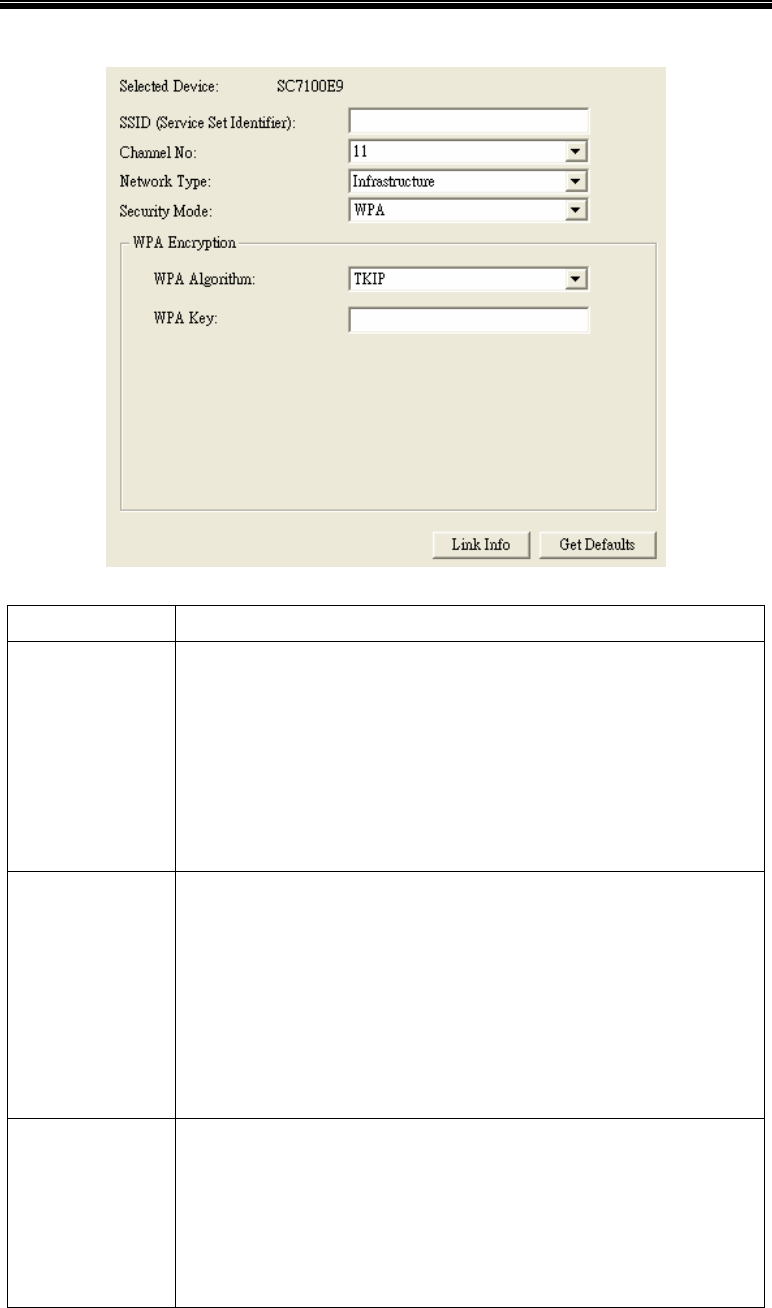
Page 35
Wireless Tab - WPA Encryption
If the Security Mode is set to WPA, the screen will look like the following example.
Figure 26: Wireless Screen
Selected Device This shows the name of the Print Server.
SSID • If using an ESS (Extended Service Set, with multiple access
points) this ID is called an ESSID (Extended Service Set
Identifier).
• To communicate, all Wireless stations MUST use the same
SSID/ESSID. Change this value, or change the other Wireless
stations, to ensure each Wireless station has the same value.
• The default value is blank (null), so the Wireless station can join
any Ad-hoc group.
Note! The SSID is case sensitive.
Channel No The effect of this setting depends on the Network Type setting:
• In Infrastructure mode, this setting has no effect. The Channel is
selected automatically, to match the Channel used by the Access
Point.
• In Ad-hoc mode, all Wireless stations must use the same Channel
number, although some Wireless stations will scan all Channels
looking for an Ad-hoc group they can join.
If you experience interference (shown by lost connections and/or slow
data transfers) you may need to experiment with different channels.
Network Type Select the correct value for your Wireless LAN.
• Ad-hoc mode is used when there is no Wireless Access Point, and
each Wireless station communicates directly with other Wireless
stations.
• Infrastructure mode is used when each Wireless station connects
to the Wireless Access point. This also provides access to the
wired LAN.

Page 36
Security Mode • Disabled - no data encryption is used.
• WEP - data is encrypted using the WEP standard.
• WPA- data is encrypted using the WPA-PSK standard. This is a
later standard than WEP, and provides much better security than
WEP.
Note: WPA-PSK in not available in Ah-Hoc mode.
WPA Algorithm Select the method used on your LAN.
WPA Key Enter the WPA-PSK used your Wireless LAN. The key must be
between 8 and 63 characters in length.
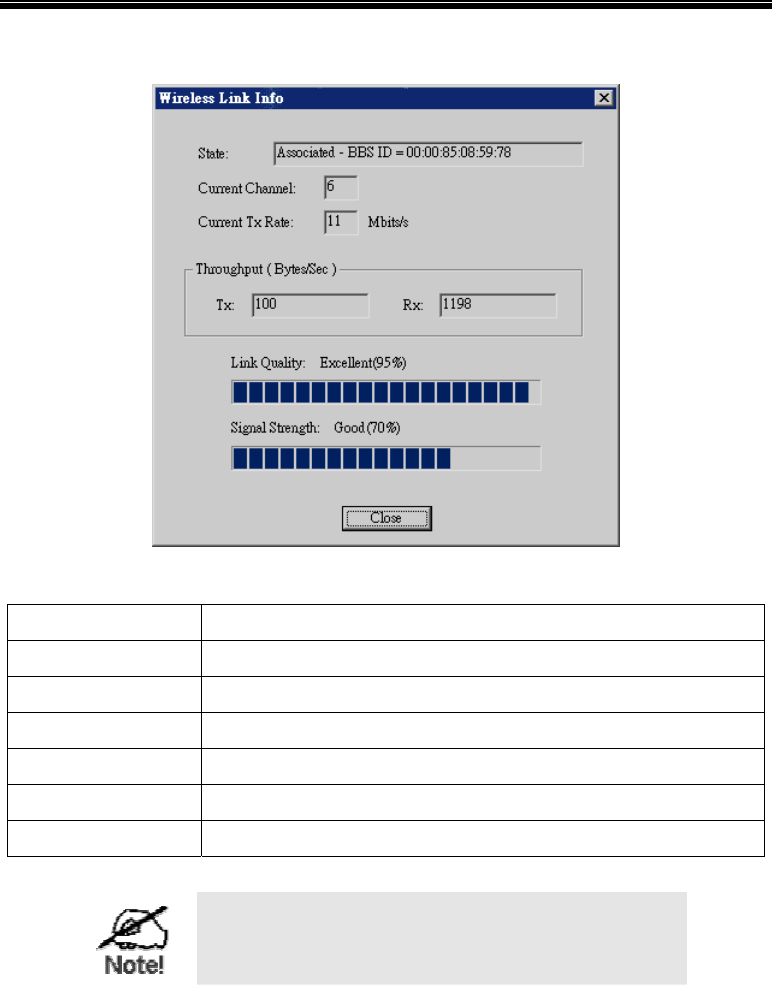
Page 37
Wireless Link Info Screen
After clicking the "Link Info" button on the Wireless Screen, a screen like the example below
will be shown.
Figure 27:Link Info Screen
State This indicates which access point is currently in use.
Current Channel The current channel which has been used.
Current TX Rate The current transmitting speed.
Throughput (Tx ) This will show how much data has been transmitted per second.
Throughput ( Rx ) This will show how much data has been received per second.
Link Quality This indicates the quality of the Wireless connection
Signal Strength This indicates the strength of the Wireless signal being received.
The "Link Quality" and "Signal Strength" data is not
available if using "Ad-hoc" mode.

Page 38
Chapter 6
Web-Based Management
This chapter explains how to use your Web Browser to configure the 802.11g Wireless
Print Server.
Overview
The 802.11g Wireless Print Server incorporates the HTTP server. This allows you to connect
to the 802.11g Wireless Print Server and configure it using your Web Browser. Most browsers
should work, provided they support tables and forms.
Preparation
Because it supports dynamic IP Address allocation using DHCP, BOOTP, or RARP, the
802.11g Wireless Print Server ships with an IP Address of 0.0.0.0.
This is NOT a valid IP Address.
Therefore, you must do ONE of the following:
• Check your DHCP server (if you have one), and determine the IP Address allocated to the
802.11g Wireless Print Server.
• Use the Diagnostic Button (if fitted) to print a report which includes the current IP
address. (Press the Diagnostic Button, and hold it for 2 seconds.)
• Use the Setup Wizard, BiAdmin or another 802.11g Wireless Print Server utility to
allocate a valid IP Address to the 802.11g Wireless Print Server.
• Add an entry to the arp table to associate the hardware address of the 802.11g Wireless
Print Server with the desired IP address, as follows:
arp -s IP_Address 00:c0:02:xx:xx:xx (Unix)
arp -s IP_Address 00-c0-02-xx-xx-xx (Windows)
Where:
IP_Address is the IP Address you wish to assign to the 802.11g Wireless Print Server.
00:c0:02:xx:xx:xx is the hardware address of the 802.11g Wireless Print Server.
Example (Unix):
arp -s 192.168.0.21 00:c0:02:12:34:56
Example (Windows):
arp -s 192.168.0.21 00−c0−02−12−34−56
Note: The hardware address of the 802.11g Wireless Print Server is shown on a sticker on the
base of the device.
6
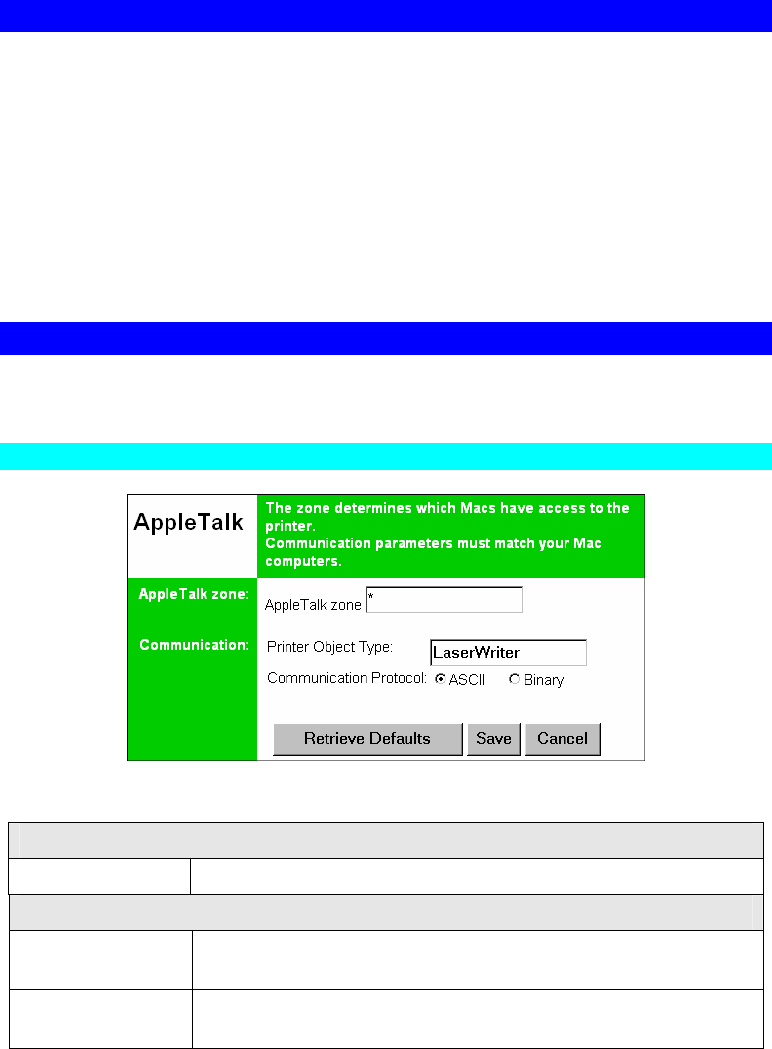
Page 39
Connecting to the 802.11g Wireless Print Server
1. Start your Web Browser.
2. In the Address box, enter HTTP:// followed by the IP Address of the 802.11g Wireless
Print Server.
e.g.
http://192.168.0.100
3. You will then be prompted for the password. If no password has been set, just press ENTER.
4. Use the menu bar to move from one screen to another. Remember to save each screen
before changing to a different screen.
Configuration Screens
The following configuration screens are available.
AppleTalk
Figure 28: AppleTalk Screen
AppleTalk zone
AppleTalk zone This determines which Apple systems can gain access to this printer.
Communication
Printer Object
Type
This value is supplied to Macintosh clients. The default value is
LaserWriter, and normally this should not be changed.
Communication
Protocol Sets whether the USB printer port uses ASCII or Binary. The
default is Binary.
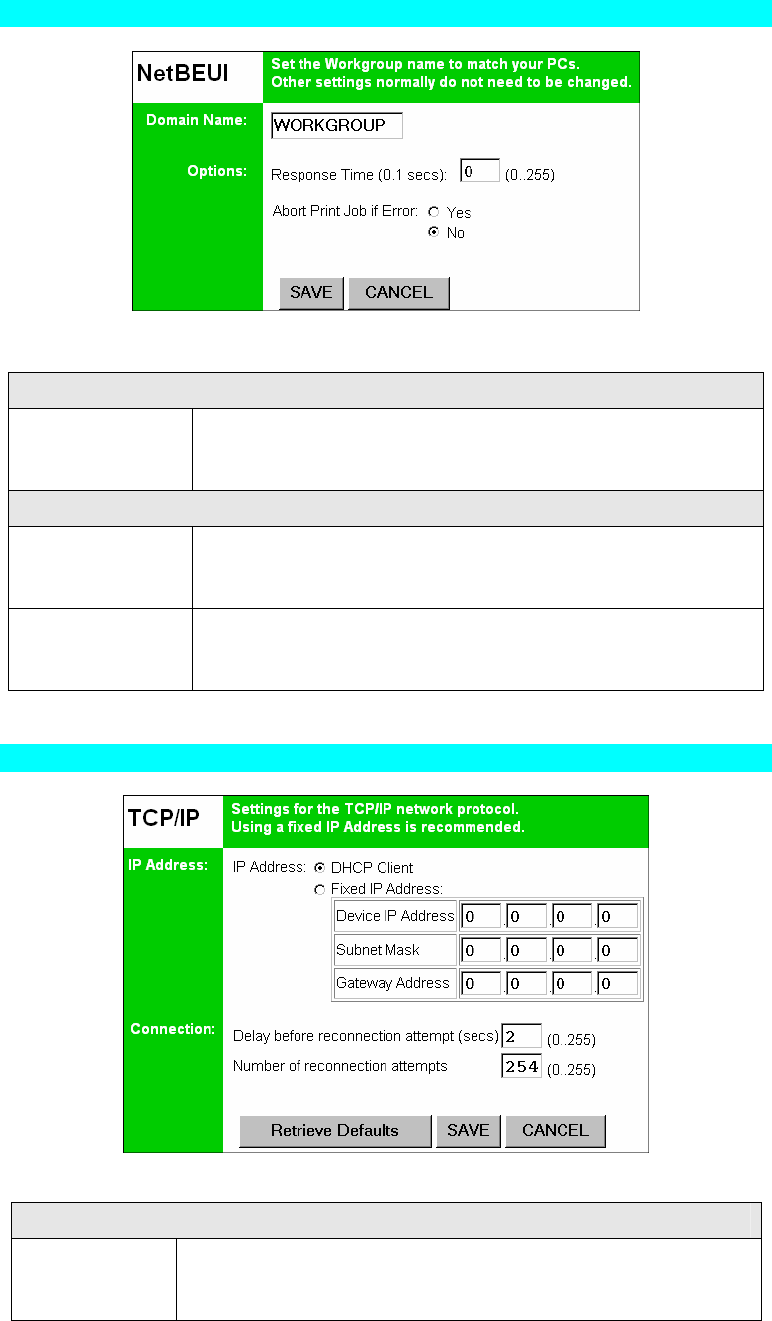
Page 40
NetBEUI
Figure 29: NetBEUI Screen
Domain Name
Domain Name Enter the designated work group to be serviced by the 802.11g
Wireless Print Server. This field is not case sensitive, so names with
different case will be considered to be the same name.
Options
Response Time
(0.1 secs) Set how fast jobs are sent to the printer. The default value of zero
(0) delay should be increased only if your printer cannot cope with
no delays.
Abort Print Job if
Error YES terminates a print job if a printing error occurs. NO (default)
will try to continue but may cause print errors. If print errors occur,
try setting this value to YES.
TCP/IP
Figure 30: TCP/IP Screen
IP Address
DHCP Client Select this if your LAN has a DHCP Server.
The 802.11g Wireless Print Server will then automatically obtain an
IP address from the DHCP Server.

Page 41
Fixed IP
Address Select this to assign a fixed IP address to the 802.11g Wireless Print
Server. If selected, you must enter a the Device IP Address, Subnet
Mask, and Gateway.
Device IP
Address IP Address assigned to the 802.11g Wireless Print Server.
Enter an unused IP address from the address range used on your
LAN.
Subnet Mask
Use the same values as PCs on your LAN (or on the same LAN
segment, if you have a Router).
Gateway
Address Use the same values as PCs on your LAN (or on the same LAN
segment, if you have a Router).
Connection
Delay before
reconnection
attempts
Sets how long the 802.11g Wireless Print Server should wait before
retrying a TCP/IP connection which is lost. Allowable values are
from 0 to 255 seconds, with 2 as the default.
Number of
reconnection
attempts
Set how many attempts at reconnection will be made. After that, the
TCP/IP session will be terminated.
Allowable values are from 0 to 255, with 254 as the default.
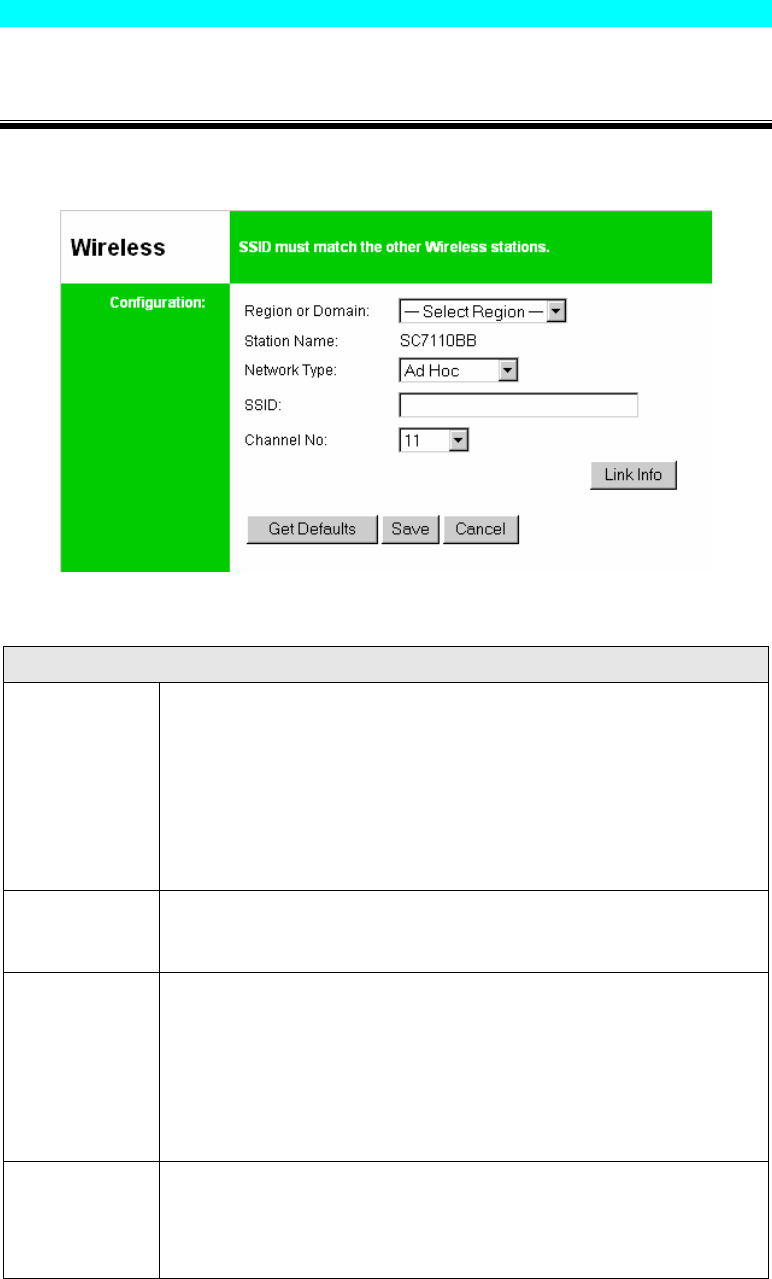
Page 42
Wireless Configuration
There are 2 options on the menu for Wireless configuration – Basic and Security.
Wireless - Basic
The settings on this screen must match the other Wireless stations in order for communication
to occur.
Figure 31: Wireless Screen
Configuration
Station name This is the same as the Device (Host) Name on the WAN screen. On
your PC, some Wireless status screens may display this name as the
Access Point in use.
Network Type Select the correct value for your Wireless LAN.
• Ad-hoc mode is used when there is no Wireless Access Point, and
each Wireless station communicates directly with other Wireless
stations.
• Infrastructure mode is used when each Wireless station connects to
the Wireless Access point. This also provides access to the wired
LAN.
SSID
(ESSID) To communicate, all Wireless stations MUST use the same
SSID/ESSID.
The default value is blank (null).
Note! The SSID is case sensitive.
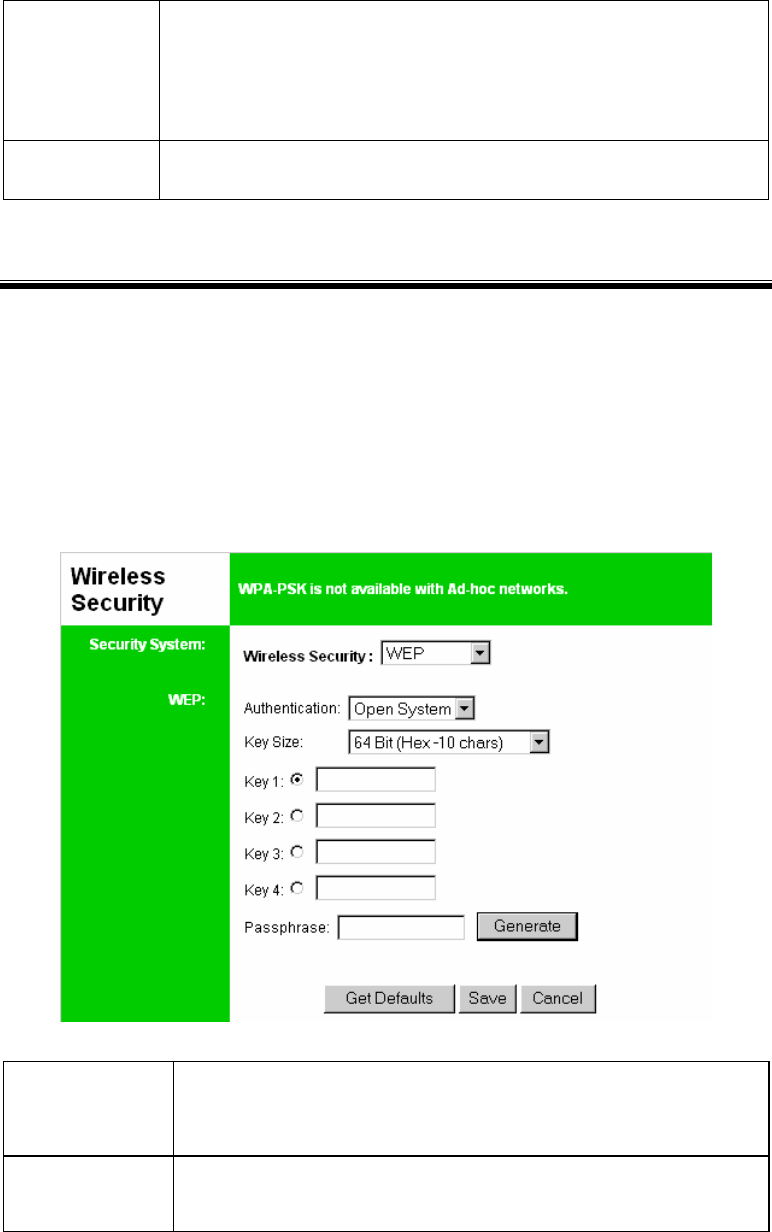
Page 43
Channel No. In Infrastructure mode, this setting has not effect – the Access Point
determines the Channel used.
For Ad-hoc mode, select the value you wish to use on your Wireless
LAN. If you experience lost connections and/or slow data transfers you
may need to experiment with different channels to see which is the best.
Link Info
Button Click this button to open a sub screen displaying link information.
Wireless Security Screen
There are 3 options for Wireless security:
• Disabled - no data encryption is used.
• WEP - data is encrypted using the WEP standard.
• WPA-PSK - data is encrypted using the WPA-PSK standard. This is a later standard than
WEP, and provides much better security than WEP. Use this if possible.
Wireless Security - WEP
If "WEP" is selected, the screen will look like the following example.
Figure 32: WEP Screen
Security
System WEP
The 802.11b standard. Data is encrypted before transmission, but the
encryption system is not very strong.
Authentication Select the appropriate value, as used on your Wireless LAN - "Open
System" or "Shared Key."
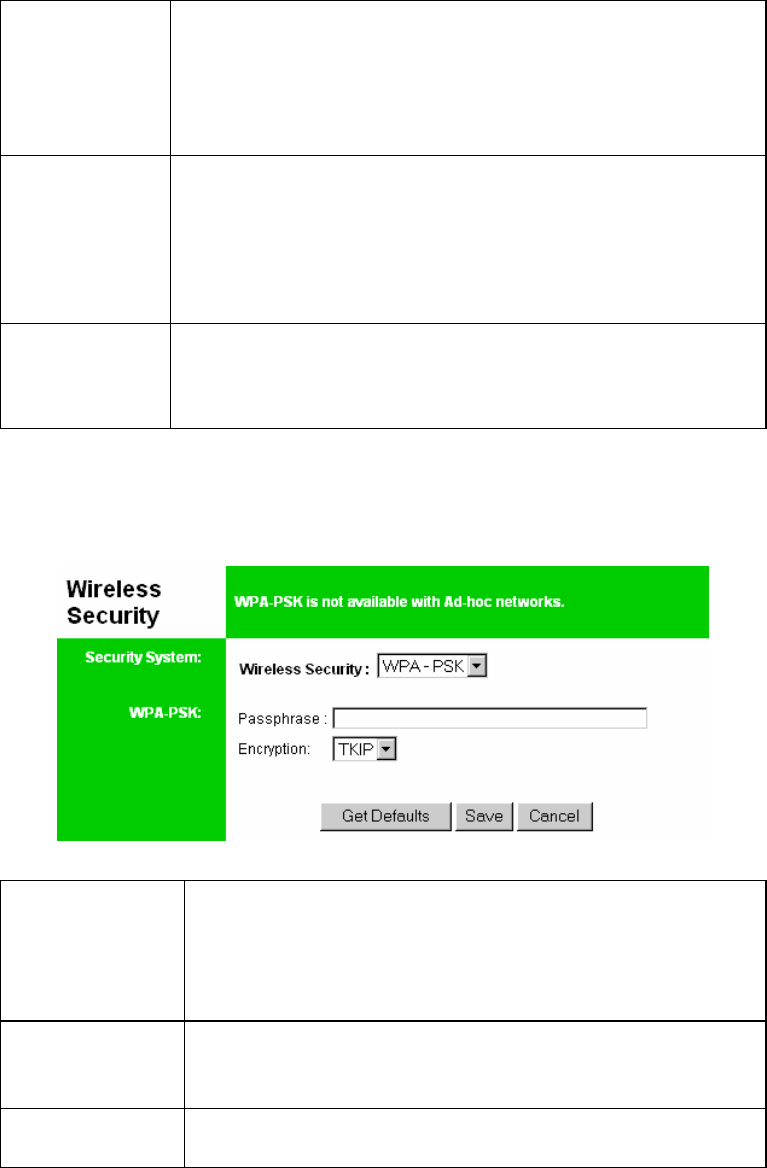
Page 44
Key Size Select the WEP Encryption level:
• 64-bit (sometimes called 40-bit) encryption
• 128-bit encryption (sometimes called 104 bit encryption)
This selection also allows you to choose the input type for the keys –
Hex or ASCII.
Keys • Use the radio buttons to select the default key.
• Enter the key value(s) you wish to use. Other stations must have
the same key values.
• Keys can be entered in Hex or ASCII, according to your Key Size
selection. Hex characters are the digits (0 ~ 9) and the letters A ~
F.
Passphrase Enter some printable characters in the Passphrase field and click the
"Generate" button to automatically configure the WEP Key(s). For 64
bit keys, four keys fields will be generated. For 128 bit keys, only the
selected WEP key will be generated.
Wireless Security - WPA-PSK
If "WPA-PSK" is selected, the screen will look like the following example.
Figure 33: WPA-PSK Screen
Security
System WPA-PSK
Like WEP, data is encrypted before transmission. WPA is more
secure than WEP, and should be used if possible. WPA-PSK is the
version of WPA, which does NOT require a Radius Server on your
LAN.
PSK Enter the Keyword key value. Data is encrypted using a key derived
from the PSK. Other Wireless Stations must use the same PSK. The
PSK must be from 8 to 63 characters in length.
Encryption Select the desired option. Other Wireless Stations must use the same
method.

Page 45
Other Screens
Server Status
This screen shows server system data and the current settings for all of the other screens. It is
read-only; no data can be input on this screen.
Printer Status
This screen displays the current status of each port. For each port, the following data is listed:
• Connected Printer- the model name of the printer connected to the port, if the printer
name is known. (If the printer is not bi-directional, this information is unavailable.)
• Status - the current status of the printer (On-line, Off-line, Out of paper)
• Printing Information - this will show either Idle or Printing.
Logical Printers
Logical Printers (ports) can be used under Unix. For each Logical Printer, the following fields
are available:
Logical Printer
No
Select the Logical Printer Port you wish to configure. (e.g. L1)
Click the Get Data button to update the display with the current data
for the selected logical printer.
Physical Port Select the Printer Port which the Logical printer will use.
Pre-string (Hex) The printer control string (in hex) to be sent to the printer before
each print job. This string cannot exceed 15 characters.
Post-String (Hex) The printer control string (in hex) to be sent to the printer after each
print job. This string cannot exceed 15 characters.
Convert LF to
CR/LF If checked, LF (line feed) characters are changed to CR+LF (carriage
return + line feed).
Internet Printing
See Internet Mail Printing in Chapter 7 for details of this feature.

Page 46
Chapter 7
Special Features
This chapter covers the special features of the 802.11g Wireless Print Server.
Overview
Your 802.11g Wireless Print Server has three (3) special features:
• IPP (Internet Printing Protocol).
• Proprietary Internet Mail Printing system.
Internet Printing Protocol (IPP)
IPP (Internet Printing Protocol) is a standards-based system to allow remote printing from a PC
to any accessible printer. Normally, the printer will be attached to a computer or other device
which functions as an IPP Server.
Client PCs need a compatible IPP Client program. Windows 2000 and XP include a suitable
IPP client. For other versions of Windows, a client program is supplied on the Print Server's
CD-ROM.
The Client must also know the IP Address or URL or the IPP Server.
IPP Server Configuration
The Print Server contains the necessary firmware to act as an IPP Server. No additional
configuration is necessary. However, the following requirements must be met.
• The Print Server must have a valid IP Address. For printing via the Internet, the Print
Server's IP Address must be external (allocated by your ISP), rather than an IP Address on
your local LAN.
• Any Router, Gateway or Firewall linking your LAN to the Internet must NOT block the
IPP protocol.
• You must advise clients of the correct URL or IP Address of the IPP Server. To use a URL
rather than an IP Address, you need to register the domain name for the URL.
• Unless clients are using Windows 2000 or XP, you must provide your clients with the
supplied IPP Client software. If it is not convenient to provide the CD-ROM, supply the
IPP_CLIENT.EXE file, located in the IPP folder.
7
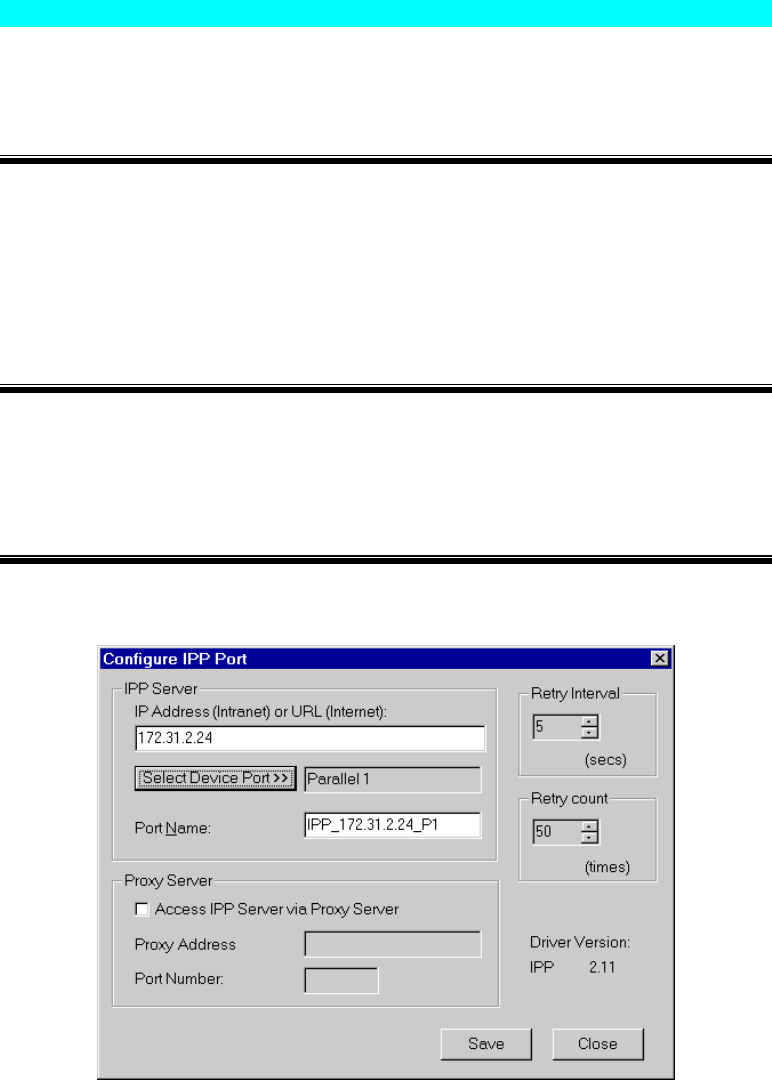
Page 47
IPP Client Setup - Windows 98/ME
For these platforms, IPP Client software is supplied on the CD-ROM.
Also you can distribute the setup program (IPP_CLIENT.EXE) to users vial E-mail.
Installing from the CD-ROM
1. Insert the CD-ROM in your drive. If the program does not start automatically, run the
SETUP program in the top-level folder.
2. Follow the prompts until you reach the Select Installation screen, and select IPP Client.
3. At the next screen, select the Install IPP Client option.
4. Click Next, and step though the remaining screens to complete the installation.
Installing using IPP_CLIENT.EXE
1. Run this program to unzip the included files.
2. The IPP Setup program will then run.
3. Follow the prompts to complete the installation.
IPP Client Configuration
1. Run the "Add IPP Port" program entry created by the installation. A screen like the
following will be displayed.
Figure 34: IPP Port
2. If Internet access from your location is via a Proxy Server, check Access IPP Server via
Proxy Server, and enter details of your Proxy Server. (This will be the same as your
Browser configuration.)
3. Enter the IP Address or URL of the IPP Server.
4. Click Select Device Port to view the available ports on the IPP Server, and select the
appropriate port. A connection to the IPP Server will be established at this time.
5. Click Save to create the IPP port on your system. You will see a message confirming that
the port has been created, then the following dialog:
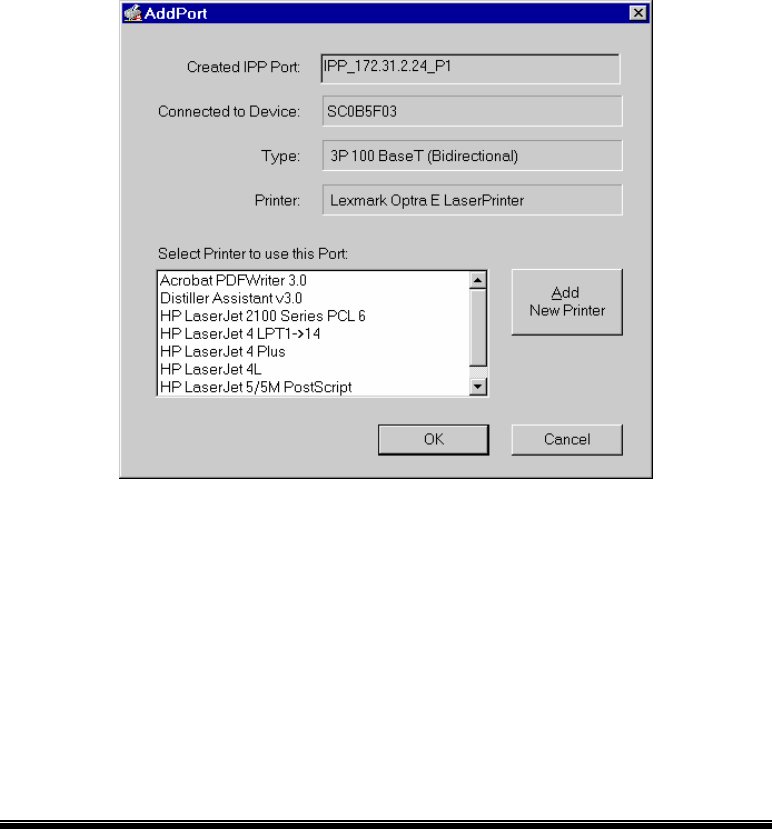
Page 48
Figure 35: Select Printer for IPP Port
6. Either select an existing printer to use the new port, and click OK.
OR
Click the Add New Printer button to create a new printer to use the IPP port. This will start
the Add Printer wizard. Follow the prompts to complete the process. Ensure that the new
printer uses the IPP port.
Installation is now complete.
• To create additional IPP Ports, repeat the entire procedure.
• The Proxy Server and other options are set individually for each IPP Port.
Changing the IPP Port Settings
After the IPP port is created, you can reach the screen shown in Figure 34: IPP Port using the
Windows Port Settings button:
1. Open the Printers folder (Start - Settings - Printers)
2. Right-click the IPP Printer, and select Properties.
3. Locate and click the Port Settings button (Details or Port tab, depending on your version
of Windows).
There are 2 settings - Retry Interval and Retry Count - which can be adjusted if you have
problems connecting to the IPP Server.
• Retry Interval sets the time interval (in seconds) between connection attempts. Increase
this number if you have a poor connection, or the remote server is very busy.
• Retry Count sets how many connection attempts will be made. Increase this number if
you have a poor connection, or the remote server is very busy.
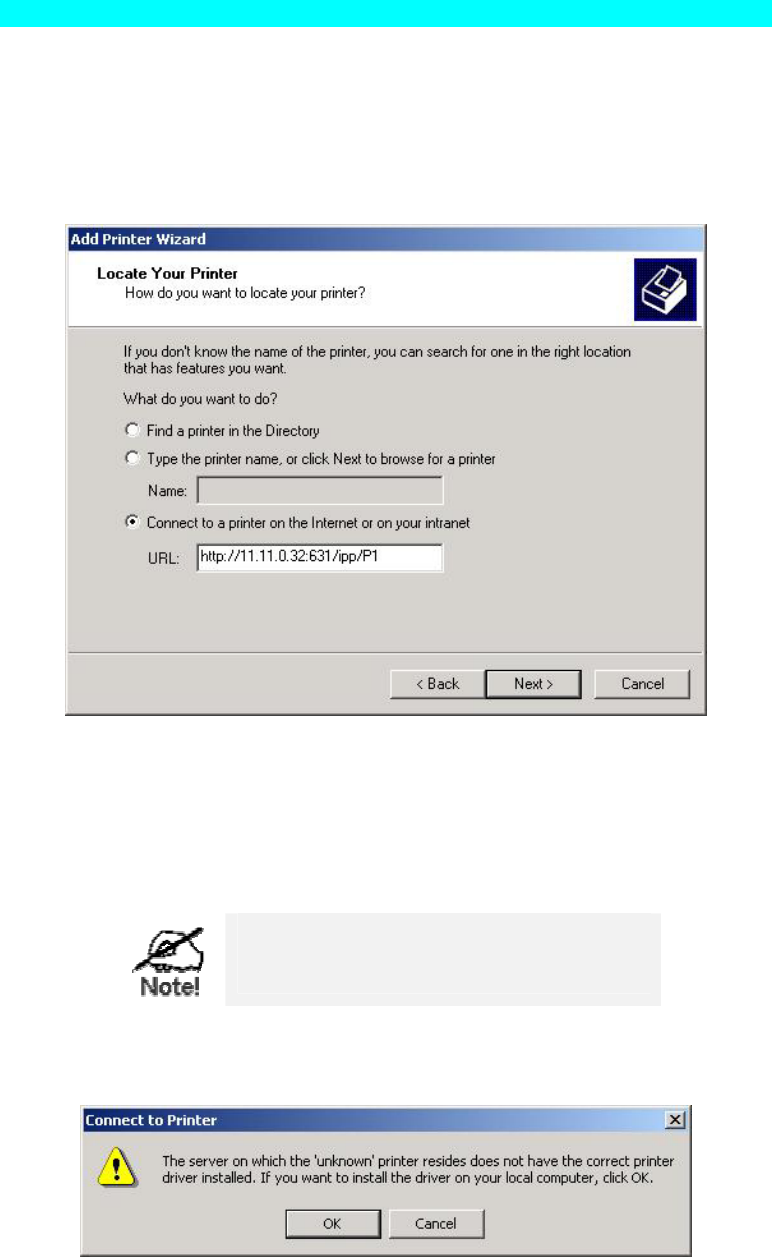
Page 49
IPP Client Setup - Windows 2000/XP
Windows 2000 and XP have their own IPP Client, and there is no need to install the supplied
IPP Client Software. To use the Windows IPP Client with the Print Server, follow this
procedure:
1. Start the Add Printer wizard.
2. Select Network Printer, and click "Next" to see the Locate your Printer screen, as shown
below.
Figure 36: Windows 2000 - Locate your Printer
3. Select Connect to a printer on the Internet or on your Intranet, and enter the URL of the
IPP Server as follows, where ip_address represents the IP Address of the IPP Server,
and 631 is the port number.
Port 1 ip_address:631/ipp/P1
These entries are case sensitive. They must be
entered as shown, with "ipp" in lower case, and
P1 in UPPER case.
4. If the connection can be established, and the printer on that port is on-line, the following
dialog will be displayed.
Figure 37: Windows 2000: No printer driver

Page 50
5. Click "OK", and then select the printer manufacturer and model to match the printer
connected to the port on the IPP Server.
6. Click "Next", and complete the Wizard.
The IPP printer is now ready for use.
Using IPP Printers
The IPP Printer can be selected and used like any other Windows printer. If the IPP Server is
not on your network, your Internet connection needs to be active.
If using the supplied IPP Client software, you can use the Query IPP Printer program installed
with Add IPP Port to check the availability of the remote IPP Server.
An IPP Server may be unavailable for any of the following reasons:
• It is powered off.
• A printer problem has caused the IPP Server to cease responding, and a restart (reboot) is
required.
• The Server's IP Address has changed.
• The Internet connection for the IPP Server is down.
• Network congestion causes the connection attempt to time out.
If using the supplied IPP Client software, there are 2 settings - Retry Interval and Retry Count -
which can be adjusted if you have problems connecting to the IPP Server.
See the previous section Changing the IPP Port Settings for details.

Page 51
Internet Mail Printing
The Internet Mail Printing System allows users to print data to your printer across the Internet.
Users send the Internet 802.11g Wireless Print Server an E-Mail, with the print job normally
sent as an attachment to the E-Mail. The 802.11g Wireless Print Server will retrieve the E-Mail
and print it.
System Requirements
Mail Server
• Accessibility. The Mail Server must be accessible by the intended clients or users.
Normally, this means a permanent connection to the Internet.
• Protocols. The Mail Server must support the POP3 and SMTP protocols. The Internet
Printing System uses these protocols and the most common E-Mail formatting standards:
• MIME (Multipurpose Internet Mail Extensions)
• Base64 Encoding (for mail attachments)
Internet 802.11g Wireless Print Server
• TCIP/IP Protocol. The LAN must use the TCP/IP protocol.
• Mail Server Access. The 802.11g Wireless Print Server must be able to access the Mail
Server using a single IP address.
• Mail Account. The 802.11g Wireless Print Server must have a Mail Account. Users print
by sending an E-Mail to this mail account.
User (Client) Requirements
• Internet Connection. Either through a LAN, or dial-up.
• E-Mail address. This is used to notify the user that their print job has been done, or if
there any problems.
• Printer Driver. Users must have a printer driver which matches the printer connected to
the remote Internet 802.11g Wireless Print Server.
• Print Capture Software. To print more than plain text, users require InterNet Printing
Port software to capture the print job and convert it into an E-Mail attachment.
The Internet Printing Port software is available for the following operating systems:
• Microsoft Windows 95, 98, or ME
• Microsoft Windows NT 4.0, Windows 2000, or XP.
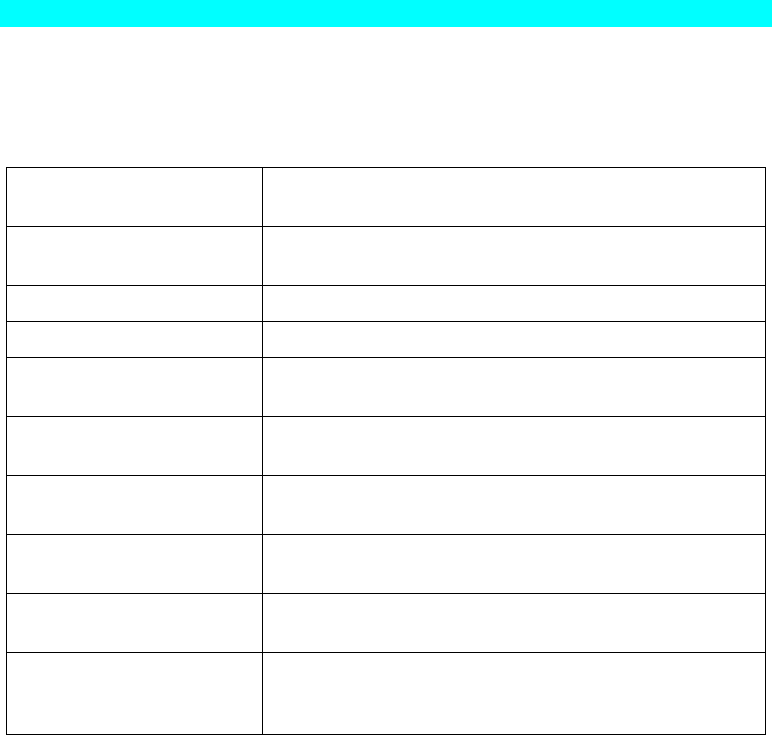
Page 52
Internet Mail Printing Configuration
The 802.11g Wireless Print Server must be configured with the data in the following table.
The supplied BiAdmin utility program, or the Web interface can be used to set the following
entries on the TCP/IP screen.
Mail Server IP Address The IP Address of the E-Mail Server used by the 802.11g
Wireless Print Server.
Mail Account The name of the E-Mail Account used by the 802.11g
Wireless Print Server.
Mail Account Password Enter the password for the above Mail Account here.
Check Mail Interval Sets how often to check for mail.
Redirect Mail Account Jobs which can not be printed will be sent to this account. If
blank, unprintable jobs will be discarded.
Default Printer Port Printer number for all Internet print jobs. Only one port can
be selected. Users on the LAN can also use this port.
Printer Model This text field identifies the printer used for Internet
printing. This value is sent to remote users upon request.
Print every E-Mail If ON, then all E-Mail received is printed. Otherwise, only
E-Mail from the InterNet Printing Port will be printed.
Print Banner If YES (default), a banner page is printed to identify the
owner of the print job.
Mail Response when
Printed
If YES, all print jobs receive an E-Mail response. If NO,
only users who set this option in their InterNet Printing Port
software receive an E-Mail.
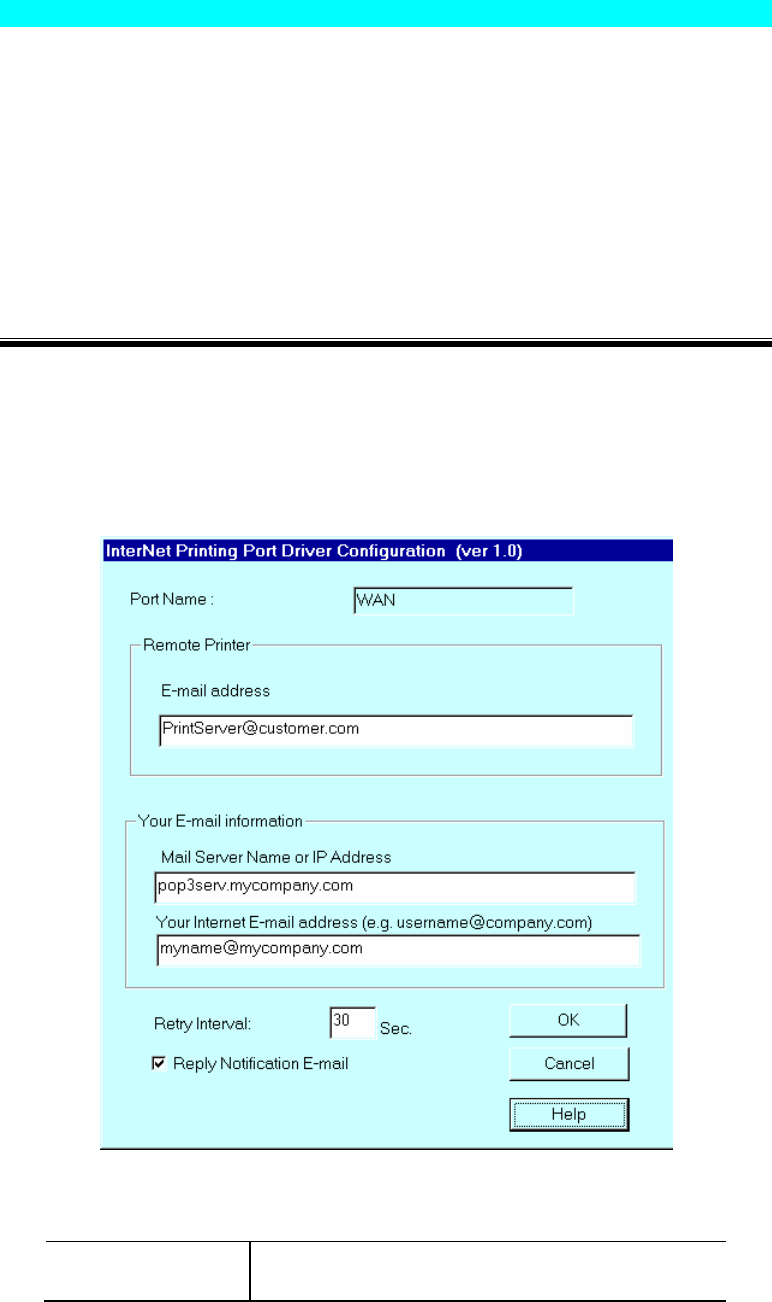
Page 53
User Software
The software provided for remote users (InterNet Printing Port) should be installed by
everyone intending to use Internet printing. Otherwise, remote users can print correctly only if:
• They send an E-Mail directly to the 802.11g Wireless Print Server Mail Account, using
their normal E-Mail application.
• The E-Mail contains plain text only.
• The Internet 802.11g Wireless Print Server is configured with Print every E-Mail ON.
Installation of the InterNet Printing Port software will create a new printer port. After attaching
the correct printer to this port, users can print to the Internet Printer using any Windows
application.
Installation - User Software
1. Run the InterNet Printing Port installation program SETUP.EXE
2. Default values for the installation are:
• Directory - C:\Program Files\Internet_Printer
• Start Menu folder - InterNet Printing Port Driver
3. You will then see the Configure Port screen, as shown in the following screenshot.
Figure 38: InterNet Printer Port
4. The following data must be provided.
Port Name Enter a descriptive name (e.g. "WAN") for the new
printer port.
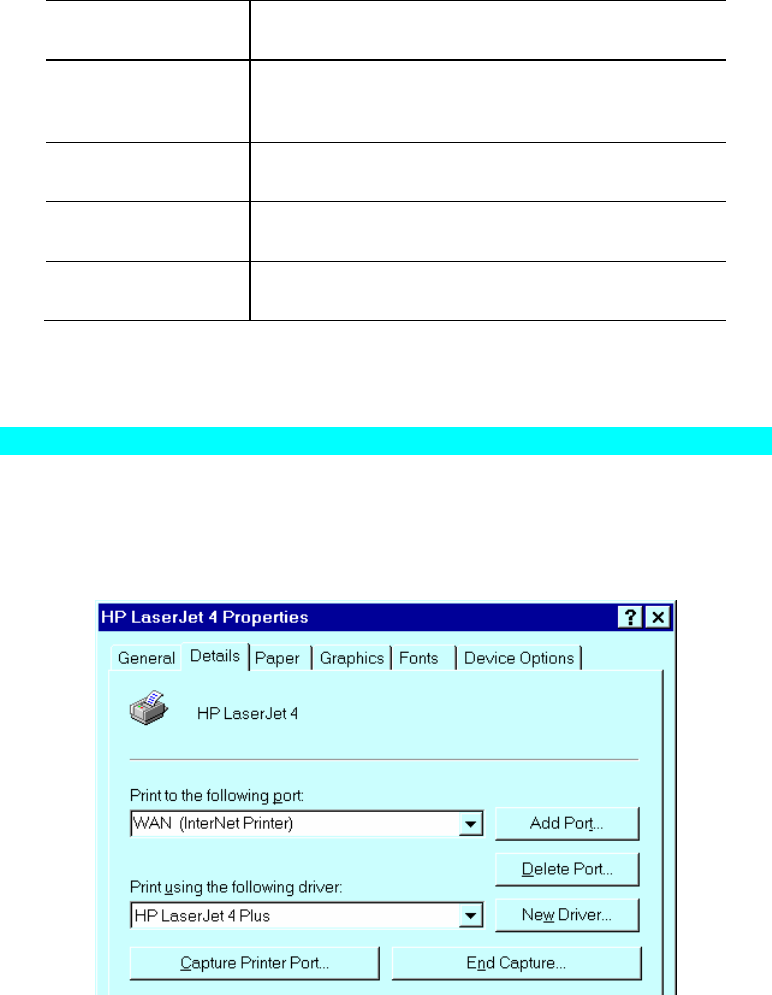
Page 54
Remote Printer
E-mail Address The E-Mail address for the Internet printer. Your print
jobs will be sent to this E-Mail address.
Mail Server Name
or IP Address This is the name or IP Address of your Mail Server. If
you are on a LAN, ask the LAN Administrator. If using
a dial-up connection, use the data provided by your ISP.
Your Internet
E-mail Address The normal address that people use to send you E-mail.
Retry Interval
(Seconds) If unable to connect to the E-Mail server, retry after this
time period (1 to 255 seconds, 30 is usually OK).
Reply Notification
Mail Check to receive an E-Mail when your print job has
been processed.
5. On completion, a new printer port will have been created.
Using the new Port
The Windows Control Panel is used to connect the correct printer to the InterNet Printing Port.
In Windows 95/NT, the procedure is:
1. Select the Printer which matches the remote printer, then choose Properties, as shown in
the example below.
Figure 39: InterNet Printer Properties
2. Select the new port - WAN (InterNet Printer) in the example - as the port for this printer.
• If you do not have the correct printer driver, or you wish to create another printer
using an existing driver, use the Windows Add Printer facility.
• Using the Windows Port Settings or Configure Port facility will reveal the same
Configure Port screen shown in Figure 38: InterNet Printer Port.
• If you wish to print to multiple Internet Printers, use the Windows Add Port facility to
add a new InterNet Printer port. Ensure that the correct data is entered in each port,
and that each port has a unique name.
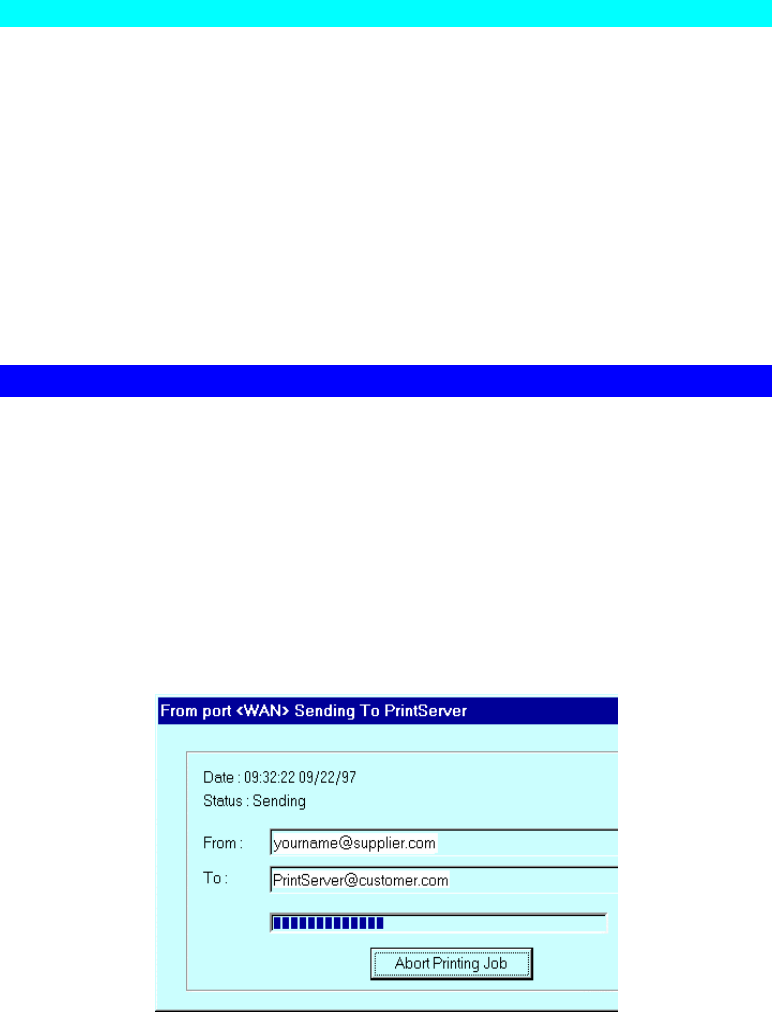
Page 55
Checking the Printer Driver
To make sure that the correct printer driver for the remote printer is installed on your system,
you can use the InterNet Printing Port to send an E-Mail to the Internet Printer. The procedure
is as follows:
1. Connect your default printer to the InterNet Printing Port.
2. Check that "Reply Notification Mail" in the InterNet Printing Port is ON.
3. From Notepad or another text editor, print a short message (e.g. "This is a test print") to
the Internet Printer.
You will receive a reply E-Mail containing the "Printer ID" which will identify the printer
attached to the 802.11g Wireless Print Server. If this does not match the printer driver you are
using, install the correct printer driver.
Printing through the Internet
1. Create or open the document you wish to print.
2. Select the Printer connected to the InterNet Printing Port.
3. If you do not have a permanent Internet connection, establish a connection now. (Note:
The InterNet Printing Port will NOT establish a dial-up connection, but it will send the E-
Mail the next time you are connected.)
4. Print the document.
5. The InterNet Printing Port will generate an E-Mail and send it to the remote printer. The
document will be encoded and sent as an attachment to the E-Mail. You will see a progress
screen similar to the example below:
Figure 40 InterNet Printing Progress
6. Close the Internet connection if you opened it in Step 3.
7. If the "Notify after print job" option is set, you will receive an E-Mail when your job is
printed.

Page 56
Chapter 8
Troubleshooting
This chapter describes some problem which may arise, and the solutions to them.
Overview
If you encounter printing difficulties, please refer to the appropriate section. If, after following
the advice in these documents, the 802.11g Wireless Print Server still does not function
properly, please contact your dealer for further advice.
Hardware & Connection Problems
Problem No. 1 All the 802.11g Wireless Print Server's LEDs are off.
Solution No. 1 Check the power supply or power connection.
Problem No. 2 802.11g Wireless Print Server's RED status LED continuously
stays on.
Solution No. 2 Reset the 802.11g Wireless Print Server by unplugging the power
supply and plugging it back in.
Problem No. 3 The 802.11g Wireless Print Server unit can not be found on the
LAN, so configuration is not possible.
Solution No. 3 If using the Wireless Interface
• Ensure that WEP is disabled on your other Wireless stations.
• If using "Ad-hoc" mode, it is not possible for Wireless stations to
connect to the 802.11g Wireless Print Server, because its default
mode is "Infrastructure". You must use the wired interface for
initial configuration.
• If using "Infrastructure" mode, ensure that your Access Point
allows connection by Wireless stations with a SSID of "ANY" or
null (blank).
• The Access Point itself has a blank (null) SSID.
• If there is a setting "Broadcast SSID" or "Allow SSID of
ANY", this setting should be Enabled.
If using the Wired 10/100BaseT interface:
Check the Hub. The link LED for the port to which the 802.11g
Wireless Print Server is connected should be ON. If it is Off, there is a
problem in the network cable.
Notes:
a) To use both the Wireless and LAN interfaces, the Wireless mode
must be set to "Ad-hoc".
b) You must Power Off the 802.11g Wireless Print Server before
connecting or disconnecting the LAN cable.
If using TCP/IP:
• Ensure that there are no routers between the 802.11g Wireless
8
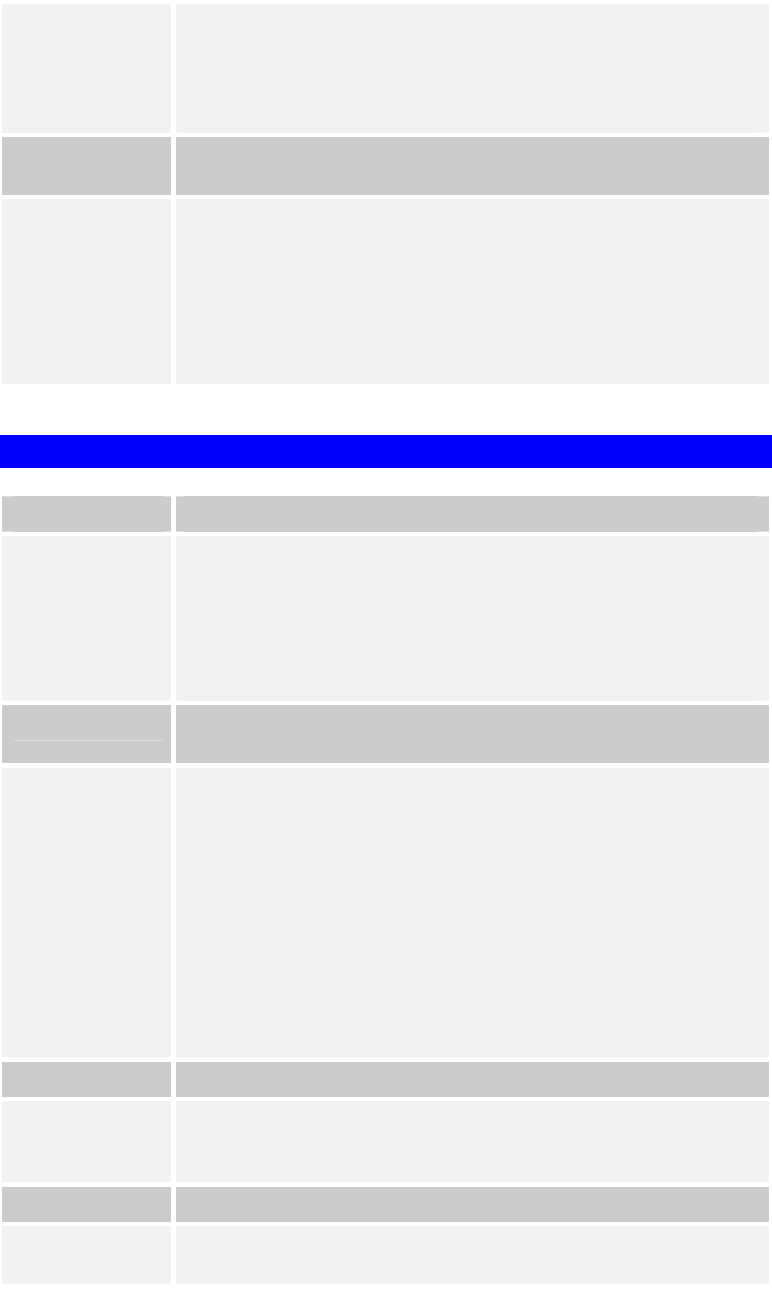
Page 57
Print Server and the PC used for configuration.
• Ensure that the PC used for configuration has the TCP/IP network
protocol installed. Test its network connection by seeing if you can
locate other LAN devices from the PC. (e.g. Use Network
Neighborhood and try to browser the network.)
Problem No. 4 I am using DHCP, and getting an IP Address conflict involving the
802.11g Wireless Print Server.
Solution No. 4 If the 802.11g Wireless Print Server is left on, but the DHCP server is
turned off, then the 802.11g Wireless Print Server will retain its IP
Address without the DHCP Server being aware of it. Simply reset the
802.11g Wireless Print Server so it will obtain a new IP Address.
This problem would also arise if you assigned static IP Address, which
is within the range used by the DHCP server. If so, use another address
which is NOT within the range used by the DHCP server.
AppleTalk (Macintosh)
Problem No. 1 Why do I get an incorrect printout?
Solution No. 1 Some possible reasons are:
• You may have chosen Binary encoding to print the file. Try to use
ASCII encoding.
• Some of the fonts, which are in your print file may not be
supported by the printer. Try selecting LaserWriter 7 instead of
LaserWriter 8.
Problem No. 2 Can't find the 802.11g Wireless Print Server's name in the
Chooser.
Solution No. 2 Try the following:
1. Make sure that AppleTalk is on (the button next to Active is
highlighted in the Chooser).
2. Make sure the printer has been on and in the READY state for a
few minutes.
3. Make sure the printer has not been renamed since its last
appearance in the Chooser.
4. If the printer resides on a network with multiple zones, make sure
the correct zone is selected from the AppleTalk Zones box in the
Chooser.
Problem No. 3 My EPS file doesn't print with the correct fonts.
Solution No. 3 This is a problem that occurs in some application programs. Try
downloading the fonts contained in the EPS file before printing the
saved EPS file.
Problem No. 4 I can't select the "Remaining from:" item in the print dialog box.
Solution No. 4 If you have selected the Layout value, "2 Up", or "4 Up", you cannot
access the Remaining from item. Choose other selections.
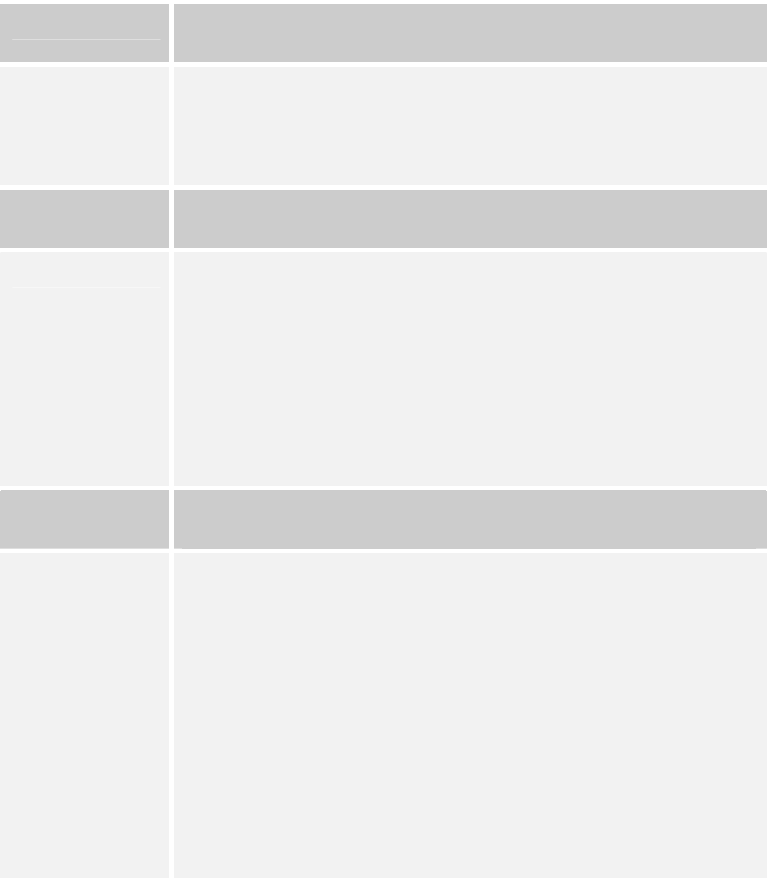
Page 58
Problem No. 5 A cover page prints either on the first or the last page of the
document.
Solution No. 5 Select one of these solutions:
• Turn the cover page feature off.
• Insert extra page breaks in your document to avoid the cover page
printing on the first or last page of your document.
Problem No. 6 The colors on my printed output do not match the colors on my
computer screen.
Solution No. 6 When the printer receives a color file, it tries to match the printed
output color to the screen color. Sometimes the printer cannot match up
the colors as closely as wanted. To alleviate this problem, perform the
following steps:
• Choose "Calibrated Color/Grayscale" in the Print pop-up menu in
the Print Options dialog box. The printer will make adjustments
to match the colors.
• Check your monitor to make sure all settings (for example,
brightness) are adjusted correctly.
Problem No. 7 When I send a print job, I get a PostScript Command error or no
print out.
Solution No. 7 Check the communication protocols. The computer, 802.11g Wireless
Print Server and printer must all be configured to the same
communication protocol.(either Binary or ASCII).
To configure your system:
1. Choose which protocol you are going to use. You should check
your printer; it may not give you a choice.
2. Set your printer to the correct protocol.
3. Use the computer's Print submenu to configure your computer to
use the protocol you have chosen.
4. Configure the 802.11g Wireless Print Server to use the same
protocol as the printer and computer.
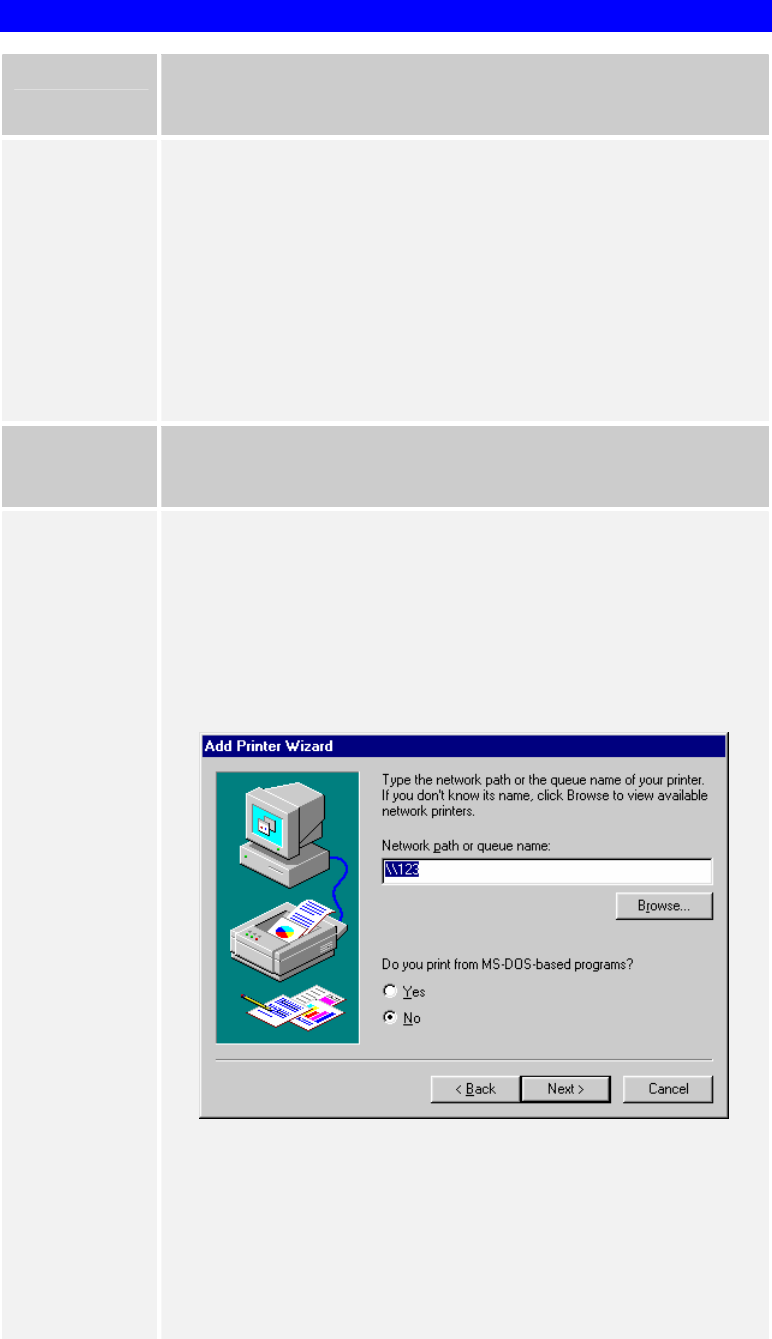
Page 59
Windows Printing Problems
Problem No. 1 When I tried to install the Printing software for Peer-to-Peer
printing, I received an error message and the installation was
aborted..
Solution No. 1 This may be caused by an existing installation of the printer port
software. Before attempting another installation:
• Remove the existing installation
• Restart your PC
To remove an existing printer port installation:
1. Open Start - Settings - Control Panel - Add/Remove Programs
2. Look for an entry with a name like "Shared Port", "Shared Printer
Port", "Print Server Driver" or "Print Server Port".
3. Select this item, click "Add/Remove", and confirm the deletion.
Problem No. 2 On Windows 98, I installed the Print Port Driver for Peer-to-Peer
Printing, but when I selected a port on a 802.11g Wireless Print
Server and clicked "Add", the printer was not installed.
Solution No. 2 Try installing the Printer using the standard Windows tools, as follows:
1. Start the Add Printer Wizard.
2. Select Network Printer when prompted "How is the printer attached
to your Computer?", and click Next.
3. When prompted for the Network Path or Queue, enter a dummy
value such as shown below. (Do NOT select Yes for "Do you print
for MS-DOS programs?")
4. The printer wizard will display a message stating that "The Network
Printer is off-line". This is OK.
Continue the Add Printer Wizard until finished.
If prompted about sharing the printer, do NOT enable Sharing.
5. Go to the Printers folder (Control Panel-Printers). The printer icon
will be grayed out indicating the printer is not ready.
6. Right-click the Printer, and select Properties. Then select the Details
tab, as shown below.
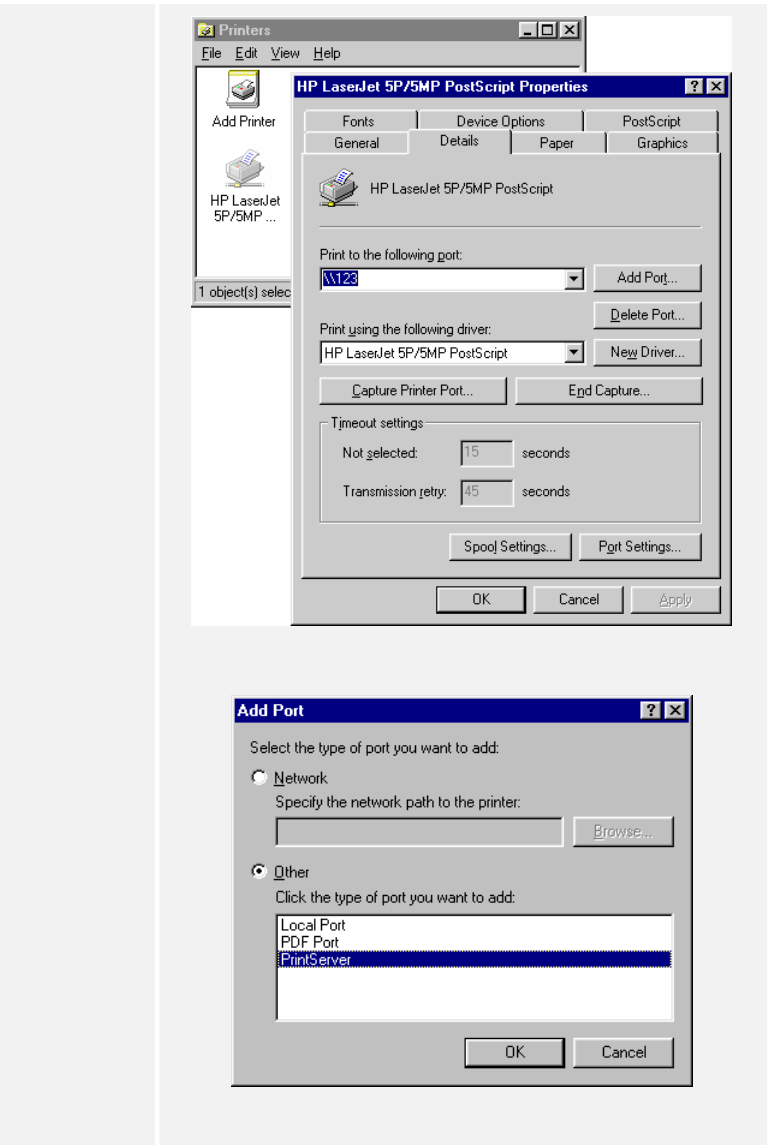
Page 60
7. Click the Add Port button. On the resulting screen, select Other,
then Printer Server, as the port to add, as shown below.
8. Click OK to see the Print Port Configuration screen, as shown
below.
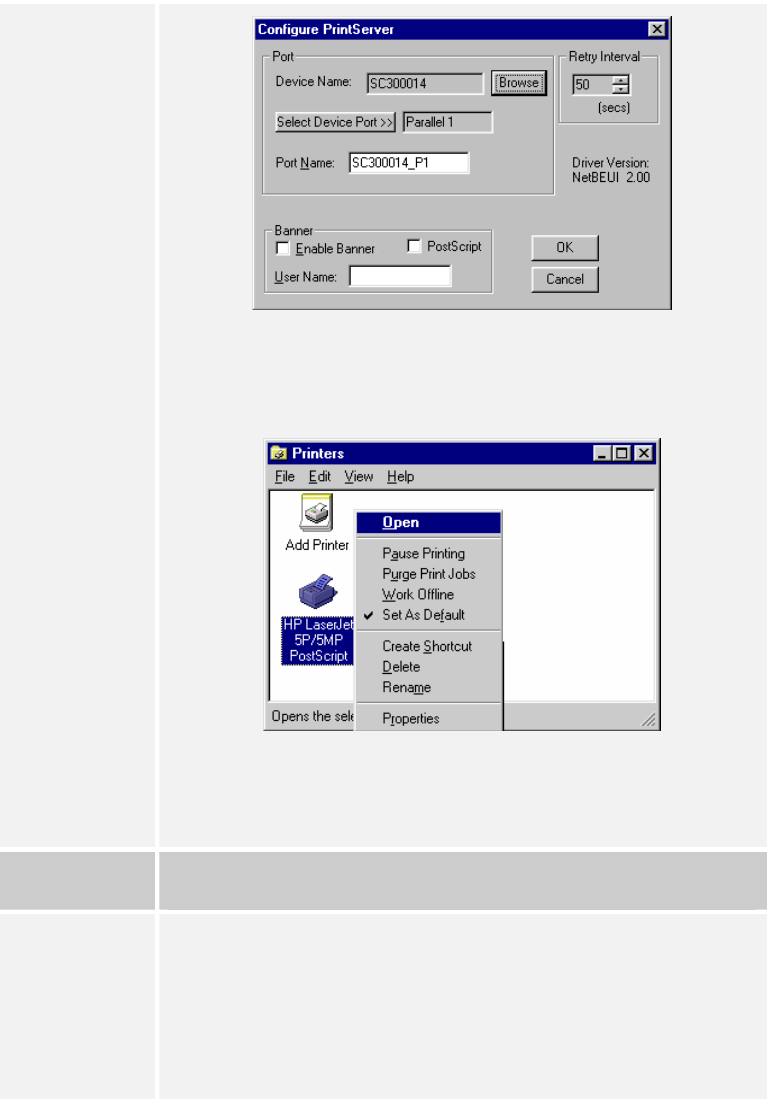
Page 61
9. Click the Browse Device button, select the desired 802.11g Wireless
Print Server, and click OK.
10. Click OK to return to the Printers folders, and right-click on the
Printer. Ensure that the Work off-line option is NOT checked.
The Printer should no longer be grayed out, and is ready for use.
Note: The screens shown above are from Windows 98. Other versions of
Windows may look slightly different, but the process is identical.
Problem No. 3 I have a Windows-only printer, and when I tried to install the Peer-
to-Peer Print driver on Windows 98/ME, installation failed.
Solution No. 3 Some Windows-only printers cannot be networked. If a Windows-only
printer cannot be installed using the Windows "Add New Printer"
wizard, but only by using a program provided by the printer
manufacturer, then it probably can't be networked.
Try the procedure described above (Solution 2). If you can't select a
Printer Driver for your printer within the "Add Printer" wizard, then the
printer can't be networked.
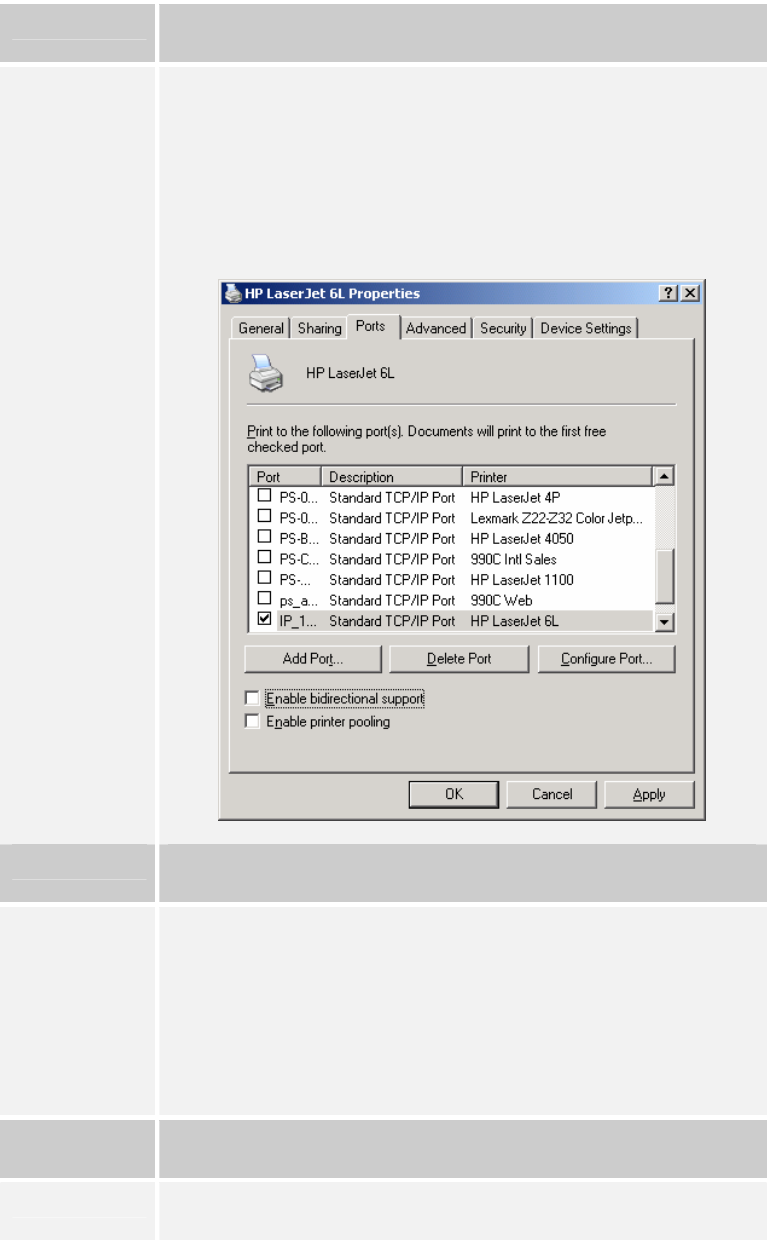
Page 62
Problem No. 4 Using Windows 2000/XP, I installed the printer using LPD as
recommended, but I can't print.
Solution No. 4 • Check that the correct Printer driver is being used.
• Try disabling the Bidirectional printing support, as follows:
1. Open the Printers folder.
2. Right-click on the Printer, and select Properties.
3. Select the Ports tab.
4. Uncheck the Enable bidirectional support checkbox.
Problem No. 5 When printing from some software applications such as Power
Point, it takes a long time and the print out is incorrect.
Solution No. 5 The problem is due to the printer, which is being configured to Start
printing after the first page is spooled. To change this setting:
• Go to Control Panel - Printers and click on your printer.
• Then select File - Properties - Details.
• When the Details screen appears, click the Spool Settings button.
• When the Spool Settings dialogue box appears, choose Start
printing after last page is spooled and click OK.
Problem No. 6 The Configuration button on the Printer Status screen in BiAdmin is
grayed out, even though my printer is bi-directional.
Solution No. 6 The button is unavailable if the printer is busy. You must wait until the
printer is idle.
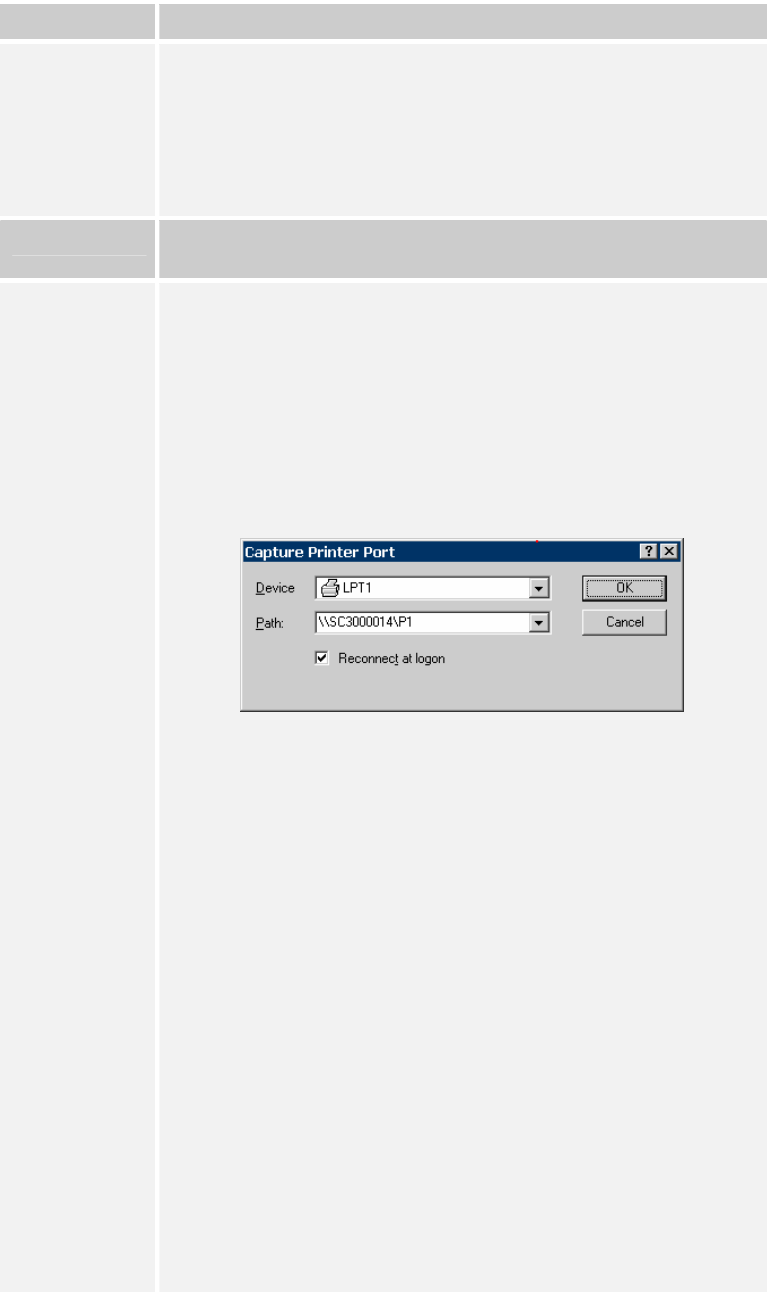
Page 63
Problem No. 7 My old printer cannot print or prints garbage.
Solution No. 7 If the printer you used is an old model with low speed, the following
steps may solve this problem:
• Open the BiAdmin Utility.
• Click the Printer Status icon.
• For the parallel port, change the Printer Type setting to Low Speed
or set the Handshake Signal setting to Ack & Busy.
Problem No. 8 How Do I Print to the 802.11g Wireless Print Server's printer from a
MS-DOS program?
Solution No. 8 Set the MS-DOS program to use LPT1 (parallel port 1) then "Capture"
the output and re-direct it to the 802.11g Wireless Print Server's printer.
Windows 98/ME
1. Select Start - Settings - Printers to open the Printers folder.
2. Right-click the 802.11g Wireless Print Server's Printer, and select
Properties
3. On the Details tab, click the Capture button to see the Capture
Printer Port button, shown below.
4. On this dialog:
• Select the Device, normally LPT1 (parallel port 1).
• Enter or select the Path to the printer:
\\printer_name\P1
Where printer_name is the actual name of your printer.
e.g.
\\SC3000014\P1
• Check the Reconnect at logon checkbox. If this is not done, the
capture setting will be lost when Windows is restarted.
Windows 2000/XP
1. Login as Administrator.
2. Open the command prompt window.
3. Enter the following command:
net use lpt1 \\printer_name\P1 /persistent:yes
Where printer_name is the actual name of your printer.
e.g.
net use lpt1 \\SC3000014\P1 /persistent:yes
To terminate this capture, use the following command at the command
prompt:
net use lpt1 /delete
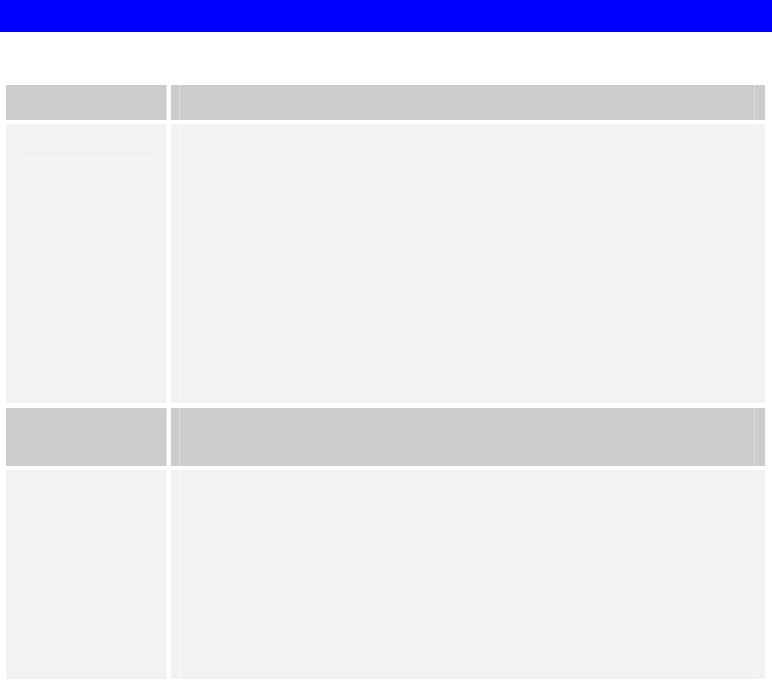
Page 64
Unix Troubleshooting
Problem No. 1 Print Server device is not recognized.
Solution No. 1 Check the following:
• The network cable is OK.
• There are no routers between the Print Server and the UNIX host
during IP address assignment.
• There are no NetWare File Servers without TCP/IP support
between the Print Server and the UNIX host.
• You have used the correct hardware address, as shown on a sticker
on the base of the device.
• Use the ping command to see if the Print Server is a valid device
on the network.
Problem No. 2 The Print Server’s IP address is forgotten and it needs to be
installed in a new environment.
Solution No. 2 Use the "Reset" button to restore the factory default settings, as
described below, then configure as for a new device.
1. Turn the Print Server OFF.
2. Press and hold the diagnostic button. While pressing the button,
switch the Print Server ON.
3. If you continue pressing the button for 10 seconds, a diagnostic
page will be printed, showing the new (default) settings.
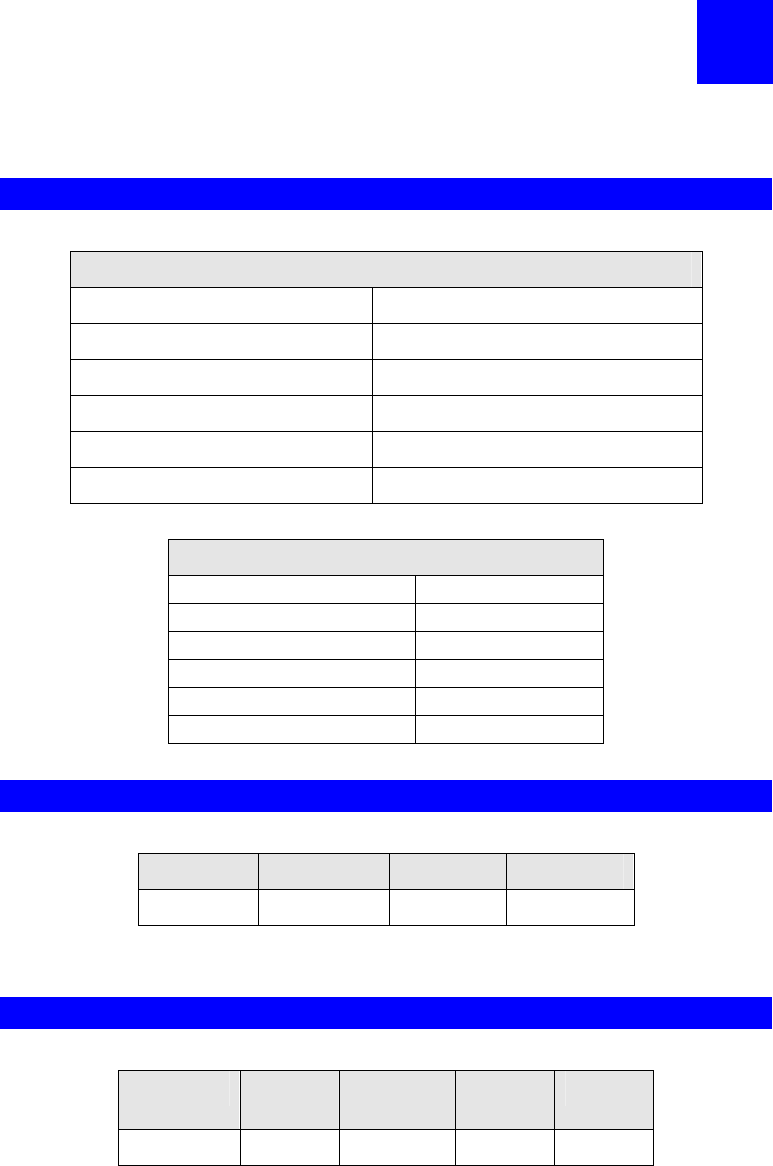
Page 65
Appendix A
Specifications
General Specifications
PS801H 802.11g Wireless Print Server
Power Consumption 5.5w max.
External Power Adapter 5V DC
LEDs 2
USB 2.0 Port 1
Ethernet Connecter 10/100BaseT
FCC / CE FCC, CE. Class B
Environmental Specifications
Operating Temperature 0 ~ 40°C
Storage Temperature -10 ~ 70°C
Shipping Temperature -40 ~ 70°C
Operating Humidity 10 ~ 80%
Storage Humidity 5 ~ 90%
Shipping Humidity 5 ~ 100%
Protocol Support
Model TCP/IP NetBeui AppleTalk
PS801H √ √ √
Feature Support
Model HTTP
Setup E-mail
Printing IPP
Support AutoIP
PS801H √ √ √ √
A

Page 66
Regulatory Approvals
FCC Statement
This equipment has been tested and found to comply with the limits for a Class B digital device,
pursuant to Part 15 of the FCC Rules. These limits are designed to provide reasonable
protection against harmful interference in a residential installation.
This equipment generates, uses and can radiate radio frequency energy and, if not installed and
used in accordance with the instructions, may cause harmful interference to radio
communications. However, there is no guarantee that interference will not occur in a particular
installation. If this equipment does cause harmful interference to radio or television reception,
which can be determined by turning the equipment off and on, the user is encouraged to try to
correct the interference by one of the following measures:
• Reorient or relocate the receiving antenna.
• Increase the separation between the equipment and receiver.
• Connect the equipment into an outlet on a circuit different from that to which the receiver
is connected.
• Consult the dealer or an experienced radio/TV technician for help.
To assure continued compliance, any changes or modifications not expressly approved by the
party responsible for compliance could void the user's authority to operate this equipment.
(Example - use only shielded interface cables when connecting to computer or peripheral
devices).
FCC Radiation Exposure Statement
This equipment complies with FCC RF radiation exposure limits set forth for an uncontrolled
environment. This equipment should be installed and operated with a minimum distance of 20
centimeters between the radiator and your body.
This device complies with Part 15 of the FCC Rules. Operation is subject to the following two
conditions:
(1) This device may not cause harmful interference, and
(2) This device must accept any interference received, including interference that may cause
undesired operation.
This transmitter must not be co-located or operating in conjunction with any other antenna or
transmitter.
The antennas used for this transmitter must be installed to provide a separation distance of at
least 20 cm from all persons and must not be co-located or operating in conjunction with any
other antenna or transmitter.
CE Standards
This product complies with the 99/5/EEC directives, including the following safety and EMC
standards:
• EN300328-2
• EN301489-1/-17
• EN60950
Page 67
CE Marking Warning
This is a Class B product. In a domestic environment this product may cause radio interference
in which case the user may be required to take adequate measures.

Page 68
Appendix B
Windows Server Configuration
Windows NT4.0 Server
If using Windows Windows NT 4.0, Microsoft TCP/IP Printing Support must be installed.
• If it is already installed, add a TCP/IP Remote Printer, as described below.
• Otherwise, install TCP/IP printing support, then add a TCP/IP Remote Printer.
Adding TCP/IP Printing Support
1. Go to Start-Settings-Control Panel-Network.
2. Click the Service option and ensure that Microsoft TCP/IP Printing is enabled. If it is not
enabled, select the Add option and enable it as usual.
3. If you added services in step 2, reboot the computer for the changes to take affect.
Adding a TCP/IP Remote Printer
1. Go to Start-Settings-Printer and invoke the Add Printer wizard.
2. When prompted with This printer will be managed by, select My Computer and click
Next.
3. Select Add Port…, then select LPR Port and click New Port.
4. In the Name of Address of server providing lpd: Dialog box, enter the 802.11g Wireless
Print Server's IP address.
5. In the Name of printer or print queue on that server dialog box, enter the appropriate
logical printer number (e.g. L1) as previously configured on the 802.11g Wireless Print
Server.
By default, L1 is port 1, and L2 is port 2 if the 802.11g Wireless Print Server has 2 printer
ports.
6. Click OK. When returned to the Printer Ports window, simply select Close and then install
your printer driver as usual.
7. When prompted whether or not the printer will be shared, select the Sharing radio button.
8. In the Shared dialog box, enter the shared printer name. (The shared name is how other
users will see this printer.) Click OK to save and exit.
Client PCs can now be configured as described in Chapter 4 - Client Configuration.
B
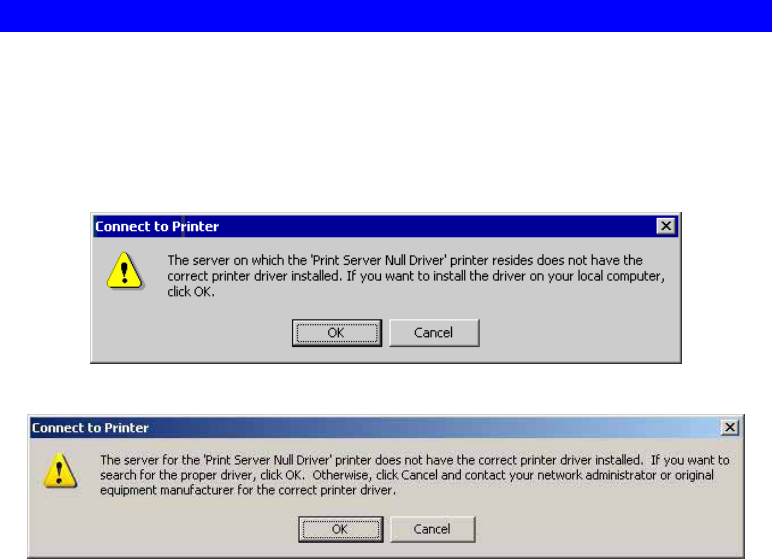
Page 69
Windows 2000/2003 Server
1. Start the Add Printer Wizard, select Network Printer, then click Next to browse for the
802.11g Wireless Print Server.
2. Locate and double-click the 802.11g Wireless Print Server, select the desired port, and
click Next.
A message like the following will be displayed:
Figure 41: Windows 2000 Message
Figure 42: Windows2003 Message
3. Click "OK", and select the correct Manufacturer and Model for this printer.
4. Follow the prompts to complete the installation.
5. In the Printers folder, right-click the new printer, and select Sharing.
• Select "Shared As:" and enter an appropriate name for this printer. Users will see this
name when browsing for the printer during installation.
• If desired, click "Additional Drivers" and install printer drivers for other versions of
Windows, such as Windows 98. This will assist users during the installation process.
6. Click OK to close this Window. Configuration is now complete.
Client PCs can now be configured as described in Chapter 4 - Client Configuration.

Page 70
Appendix C
Unix Systems
Overview
Your 802.11g Wireless Print Server supports the LPD Unix printing method, which is
supported by all common Unix systems.
You must configure both the 802.11g Wireless Print Server itself and your Unix system, as
described in the following sections.
802.11g Wireless Print Server IP Address Configuration
Because it supports dynamic IP Address allocation using DHCP or BOOTP, the 802.11g
Wireless Print Server ships with an IP Address of 0.0.0.0. This is NOT a valid IP Address.
Therefore, you must do ONE of the following:
• Check your DHCP server (if you have one), and determine the IP Address allocated to the
802.11g Wireless Print Server.
• Configure your BOOTP Server (if you have one), to provide an IP address to the 802.11g
Wireless Print Server, then restart the 802.11g Wireless Print Server.
• Use a Windows platform and run the Setup Wizard or BiAdmin utility to allocate a valid
IP Address to the 802.11g Wireless Print Server.
• Add an entry to the arp table to associate the hardware address of the 802.11g Wireless
Print Server with the desired IP address, as follows:
arp -s IP_Address 00:c0:02:xx:xx:xx
Where:
IP_Address is the IP Address you wish to assign to the 802.11g Wireless Print Server.
00:c0:02:xx:xx:xx is the hardware address of the 802.11g Wireless Print Server.
Example
arp -s 192.168.0.21 00:c0:02:12:34:56
You should then assign this IP address to the 802.11g Wireless Print Server using your
Web Browser, as described in Chapter 6 - Web-based Management.
Note:
The hardware address of the 802.11g Wireless Print Server is shown on a sticker on the
base of the device.
Other 802.11g Wireless Print Server Configuration
The recommended method to configure the 802.11g Wireless Print Server is to use the Web-
based interface, as described in Chapter 6 - Web-based Management.
• Ensure that the TCP/IP settings are correct for your network.
• The logical printers (e.g. L1) must be configured correctly to match your system.
C
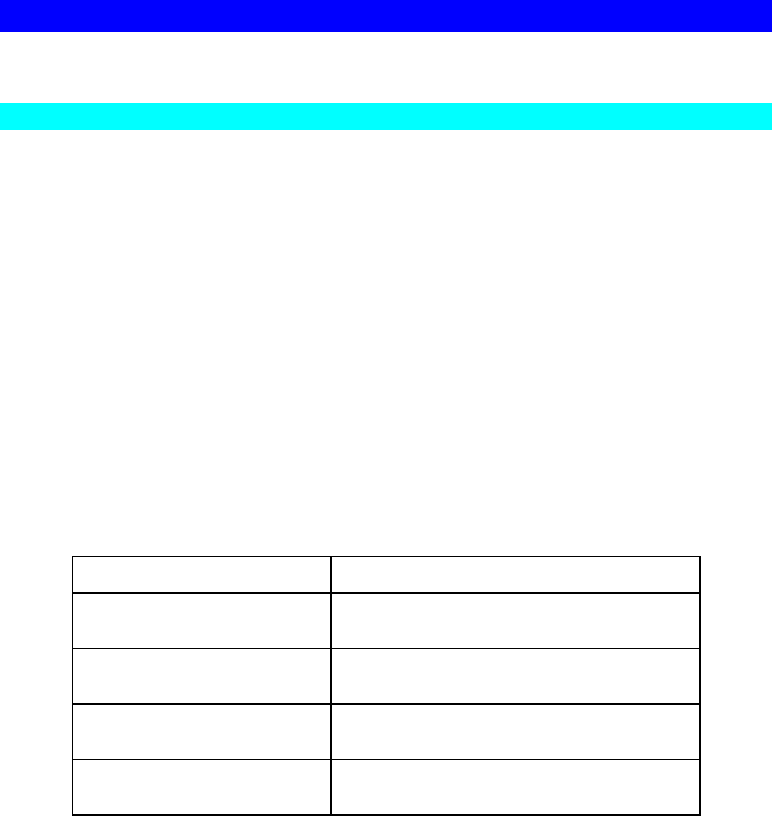
Page 71
LPD Configuration
Configuration for the most common platforms is described below.
LPD on IBM AIX 4.15
Before proceeding, ensure that the 802.11g Wireless Print Server has been assigned an IP
Address. To setup your AIX system for LPD printing, perform the following steps.
1. Add the 802.11g Wireless Print Server to /etc/hosts.lpd, using the name you assigned to
the 802.11g Wireless Print Server.
2. Start the LPD daemon if it is not running, using the following command:
start src -s qdaemon
3. Start the system administration tool smit and select Print Spooling.
4. Create the required number of queues (one for each logical printer) by selecting:
Add a Print Queue
Remote (Printer attached to Remote Host)
Standard Processing
5. Use the following information:
Field Entry
Name of queue to add Use a single-word queue name, which
indicates which printer is attached.
Hostname for remote server 802.11g Wireless Print Server name as
used in /etc/hosts.lpd.
Name of queue on remote
server
Logical printer number (e.g. L1) to service
this queue.
Type of print spooler on
remote server
Use default value. (AIX Version xxx)
6. Ensure that the logical printers are configured in the 802.11g Wireless Print Server.
7. Print using the following command:
lp -d printer_queue file_name
Where
printer_queue is one of the entries used in Name of queue to add.
file_name is the file you wish to print.

Page 72
LPD on System V
Before beginning LPD Setup, ensure that an IP Address has been assigned to the 802.11g
Wireless Print Server. Keep the following points in mind:
The remote host name is the name of the 802.11g Wireless Print Server.
The remote printer name is the print queue name for the Logical Printer. Logical printers also
need to be configured on the 802.11g Wireless Print Server itself.
If your UNIX asks for the LPD type, be sure to identify the service type as BSD. The 802.11g
Wireless Print Server’s LPD protocol meets BSD system standards.
In the sample commands shown, printer_name is the name of the Print Queue serviced by the
802.11g Wireless Print Server, and Spooler_directory is the name of the directory, which
is used to spool the print jobs.
Procedure
Action Sample Command
Stop Print Services /usr/lib/lpshut
Add a System Printer /usr/lib/lpadmin -p printer_name -v /dev/null
Restart the Print Services /usr/lib/lpsched
Enable printing to the new
printer device
enable printer_name
Start accepting jobs for the
new printer device
accept printer_name
Create a spooling directory mkdir /usr/spool/Spooler_directory
Make spooling daemon the
owner of this directory
chown daemon /usr/spool/Spooler_directory
Create read/write permissions chmod 775 /usr/spool/Spooler_directory
Give permissions to LPD
processes.
chgrp daemon /usr/spool/Spooler_directory
Add remote printer(s) See following section
Adding Remote Printers
A remote printer is added by inserting the following line in the /etc/printcap file.
The entry is really one line, but can be entered as shown.
Use a TAB character where shown.
Printer_name|Remote_Printer_Alias:\
[TAB] :lp=:\
[TAB] :rm=PS_NAME:\
[TAB] :rp=Logical_Printer_name:\
[TAB] :sd=Spooler_directory:\
[TAB] :mx#0:

Page 73
Where:
Printer_name is the Print Queue name used to store jobs for the corresponding logical
printer.
PS_NAME is the 802.11g Wireless Print Server name defined in /etc/hosts.
Logical_Printer_name is the logical printer name on the 802.11g Wireless Print Server.
(e.g. L1)
Spooler_directory is the directory you created in Step 6.
Example:
Marketing|RP1_PS123456:\
[TAB] :lp=:\
[TAB] :rm=PS_Rm203:\
[TAB] :rp=L1:\
[TAB] :sd=/usr/spool/Marketing:\
[TAB] :mx#0:
Repeat this process for each Logical Printer/Print Queue combination that you wish to create.
LPD on Linux
If using the command line, the procedure is the same as for System V. (above)
On recent Linux distributions, you can use the graphical X-windows interface instead of the
command line. The procedure is described below, but may vary according to your version of
Linux.
1. Start your X-windows shell.
2. Select Control Panel, then Printer Configuration.
3. Select Add. For the printer type, select Remote Unix (lpd) Queue.
4. Use the following data to complete the resulting dialog.
Field Data
Name Enter a name for this printer
Spool Directory /var/spool/lpd/name_of_printer
File Limit 0 (no limit)
Remote Host Name or IP Address of 802.11g Wireless Print
Server
e.g. SC3000014
Note: host file entry is required to use the name
instead of IP Address
Remote Queue Ln
Where n is the Logical Printer number
By default, L1 is port 1, and L2 is port 2 if the Print
Server has 2 ports.
5. Save this data, and exit the Printer Configuration. Configuration is now completed, and the
printer is now available for use.

Page 74
LPD on BSD
Before continuing, ensure that an IP Address has been assigned to the 802.11g Wireless Print
Server. Remember the following:
The remote host name is the name of the 802.11g Wireless Print Server.
The remote printer name is the logical printer (e.g. L1) on the 802.11g Wireless Print Server.
If asked for the LPD type, enter the service type as BSD.
In the sample commands shown, printer_name is the Print Queue serviced by the logical
printer on the 802.11g Wireless Print Server, and Spooler_dir is the name of the directory,
which is used to spool the print jobs.
Procedure
Action Sample Command
Create a spooling directory mkdir /usr/spool/Spooler_dir
Set spooling daemon as owner
of this directory
chown daemon /usr/spool/Spooler_dir
Create read/write permissions chmod 775 /usr/spool/Spooler_dir
Give permissions to LPD
processes
chgrp daemon /usr/spool/Spooler_dir
Add remote printer(s) See below
Start lpc print mechanism lpc start printer_name
Adding Remote Printers
A remote printer is added by inserting the following line in the /etc/printcap file.
The entry is really one line, but can be entered as shown.
Use a TAB character where shown.
Printer_name|Remote_Printer_Alias:\
[TAB] :lp=:\
[TAB] :rm=PS_NAME:\
[TAB] :rp=Logical_Printer_name:\
[TAB] :sd=Spooler_directory:\
[TAB] :mx#0:
Where:
Printer_name is the Print Queue name used to store jobs for the corresponding logical
printer.
PS_NAME is the 802.11g Wireless Print Server name defined in /etc/hosts.
Logical_Printer_name is the logical printer name on the 802.11g Wireless Print Server.
(e.g. L1)
Spooler_directory is the directory you created in Step 6.

Page 75
Example:
Marketing|RP1_PS123456:\
[TAB] :lp=:\
[TAB] :rm=PS_Rm203:\
[TAB] :rp=L1:\
[TAB] :sd=/usr/spool/Marketing:\
[TAB] :mx#0:
Repeat this process for each Logical Printer/Print Queue combination that you wish to create.
Printing using LPD
For LPD printing instructions, refer to your UNIX manual. The following example is for a
BSD system:
lpr -P printer_name filename
Where:
printer_name is the name of the Print Queue defined on the Unix host.
filename is the name of the file you wish to print.
Example:
lpr -P Marketing /etc/hosts
In the above example, the /etc/hosts file is sent to the printer queue Marketing. It will then be
sent to the logical printer associated with this queue.
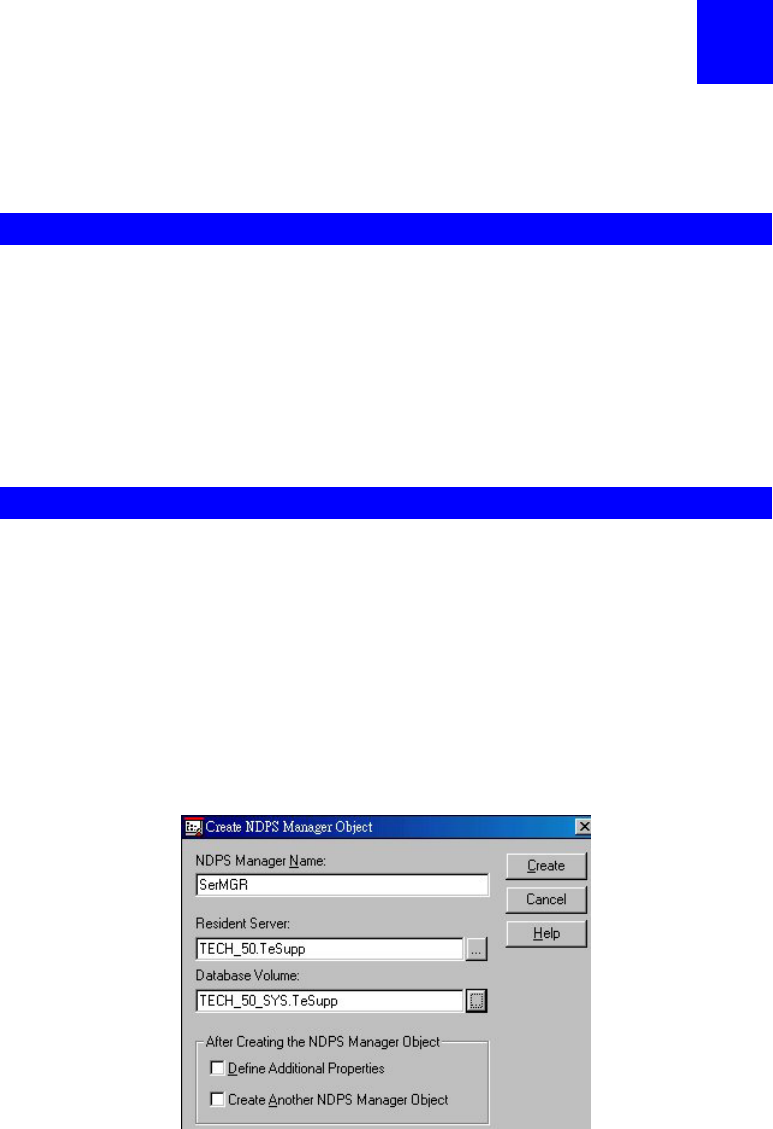
Page 76
Appendix D
NetWare
Overview
• The Print Server must be configured as a valid device on your TCP/IP network. This
printing method uses LPR over TCP/IP, not the Netware protocol.
• To use NDPS (Novell Distributed Printing Services), the Novell server must be running
Novell NetWare 5, and the PCs (clients) must be running IntranetWare Client V2.2. or
later.
The following procedure is designed to enable Public Access Printing under NDPS. Public
Access Printing allows anybody on the network to access the printer.
Creating an NDPS Manager Object
If an NDPS Manager Object already exists, skip this procedure and proceed to Creating an
NDPS Printer Agent.
1. Login to NetWare 5.0 Server as Admin and start the NetWare Administrator program
Nwadmn32.exe.
2. Select the container on NetWare Administrator where you want the NDPS Manager object
to reside. (e.g. TeSupp)
3. Select Create - Object from the menu bar to view the New Object dialog.
4. Select NDPS Manager as the object to create. The Create NDPS Manager Object window
shown below will appear.
Figure 43: Create NDPS Manager Object
5. Type a name in the NDPS Manager Name.(e.g. SerMGR in Figure 1 above)
6. Browse the Resident Server and select where you want the NDPS Manager object to be
assigned. (e.g. TECH_50.TeSupp in figure 1 above)
7. Browse the Database Volume and select where you want the NDPS Manager database to
be assigned. (e.g. TECH_50_SYS.TeSupp in figure 1 above)
8. Click Create. The new NDPS Manager will appear in the main browser window.
D
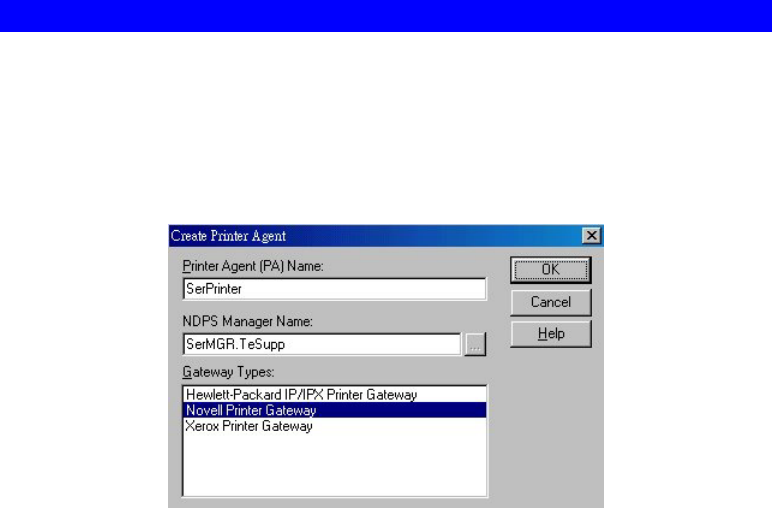
Page 77
To start the NDPS Manager in future, enter the following command at the console:
LOAD NDPSM
then select the NDPS Manager object.
To start the NDPS Manager whenever you bring up the server, add a command like
the following to your server's AUTOEXEC.NCF file:
LOAD NDPSM SerMGR.TeSupp
The last item is the name of the NDPS Manager object you wish to load.
9. After creating an NDPS Manager, you can create NDPS printers by using NetWare
Administrator, as explained below.
Creating an NDPS Printer Agent
To create Public Access Printers using the NDPS Manager Object in NetWare Administrator,
follow this procedure:
1. Start the NDPS Manager object you will be using to control the Printer Agent.
2. At the Identification page, click the Printer Agent List.
3. Click New to see the Create Printer Agent window, as shown below.
Figure 44: Create Printer Agent
4. Enter the desired name for the Printer Agent (PA) Name.
5. Normally, the NDPS Manager will be the NDPS Manger object you are using.
6. Select Novell Printer Gateway in the Gateway Type. (see figure2 above)
7. Click OK and then select the available printer.
8. Select Remote (LPR on IP) in the Connection Type.
9. Click Next to see the following Configure Port Handler screen.
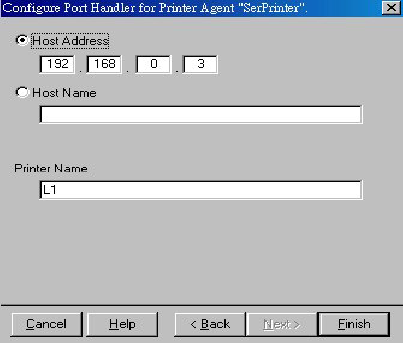
Page 78
Figure 45 Configure Port Handler
10. In the Host address IP field, enter the IP Address previously assigned to the Print Server
device.
11. In the Printer Name field, enter the Logical Port name on the Print Server. (L1 for Port 1,
L2 for port 2).
12. Click Finish, then select appropriate drivers for Windows 98 etc as required.
13. The new Printer Agent will now appear in the Printer Agent List window.
Repeat this procedure for any other ports on the Print Server, or for any other logical printers
you wish to use.
Client PCs can now be configured as described in Chapter 4 - Client Configuration.